Railway News
Opening and closing of railways of Japan
April 1, 2025
By the merger of Keisei Dentetsu (京成電鉄) or Keisei Electric Railway and Shin-keisei Dentetsu (新京成電鉄) (Shin-Keisei Electric Railway) the former Shin-keisei line has been renamed Keisei Matsudo Line. Similarly Semboku Kōsoku Tetsudō(泉北高速鉄道)(Semboku Rapid Railway) has been merged into Nankai Denki Tetsudō (南海電気鉄道) or Nankai Railway, and the Semboku Rapid Railway Line has become Nankai's Semboku Line.
 January 19, 2025
January 19, 2025
Ōsaka Kōsoku Denki Kidō (大阪市高速電気軌道) or Osaka Metro opened the 3.2km extended section of Yongō (Chūō) Line (4号(中央)線) from Cosmo-squre to Yumeshima, the site of Expo 2025 to be held for six months from April 13, 2025. Osaka Metro is a Class 3 Operator, and the tracks are owned by Ōsaka-kō Transport System (大阪港トランスポートシステム), a Class 3 Operator.
December 1, 2024
Tateyama Kurobe Kankō (立山黒部貫光) closed the 3.7 km trolleybus line between Murodō and Daikambō, a part of the Tateyama Kurobe Alpine Route. The service will be replaced with battery-electric buses in April 2025. There had been urban trolleybus services in Tokyo, Yokohama, Kawasaki, Nagoya, Kyoto and Osaka which were all closed until April 1, 1972 when the Yokohama municipal trolly bus was finally closed. On August 1, 1965 Kansai Electric Power Company (KEPCO) (関西電力) opened a trolleybus line passing through Kanden Tunnel, which was built to provide with equipment and materials for the construction of the hydroelectric plant of Kurobe Dam. The Tateyama Tunnnel trolley bus line, which was opened on April 23, 1996 by replacing diesel buses, has become the last remaining trolleybus line in Japan after closing of the Kanden Tunnel Trolley bus sercvice on December 1, 2018.
April 1, 2024
JR Hokkaidō (JR北海道) closed the 81.7km Furano = Shintoku section of Nemuro Main Line (根室本線) ending its 123 years history. The closed section used to be the trunk route connecting east end west of Hokkaido until October 1, 1981 when it was substitued by Sekisho line. A part of the closed section had been halted since August 31, 2016 due to the damage by typhoon and operated by a substitute bus service, which will be extended to the whole closed section.
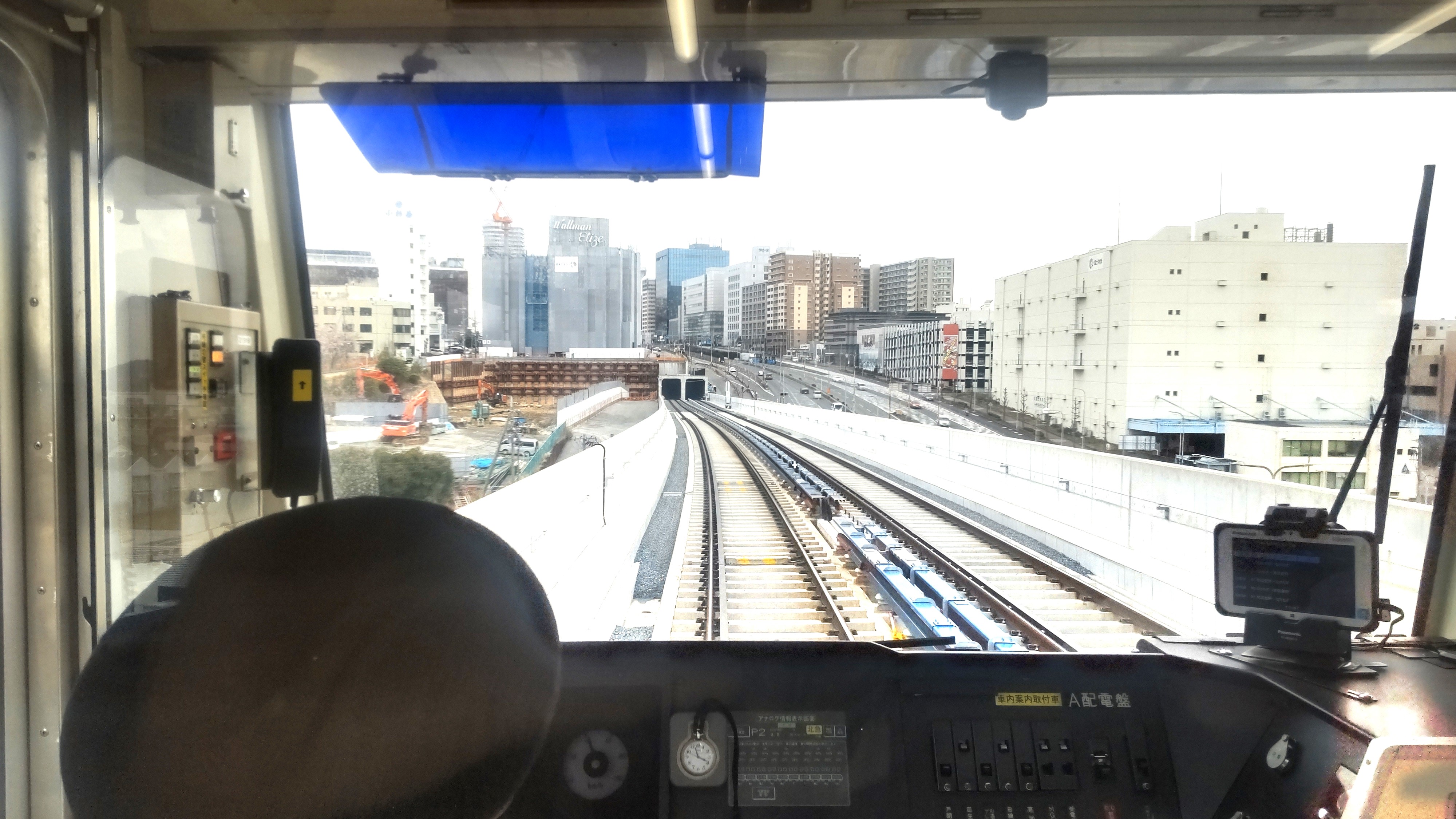 March 23, 2024
March 23, 2024
Kita Ōsaka Kyūkō Dentetsu (北大阪急行電鉄) opened the 2.5km extended section of Namboku Line (南北線) between Senri-chūō and Minoo-kayano.
(Photo: Tracks of extended line)
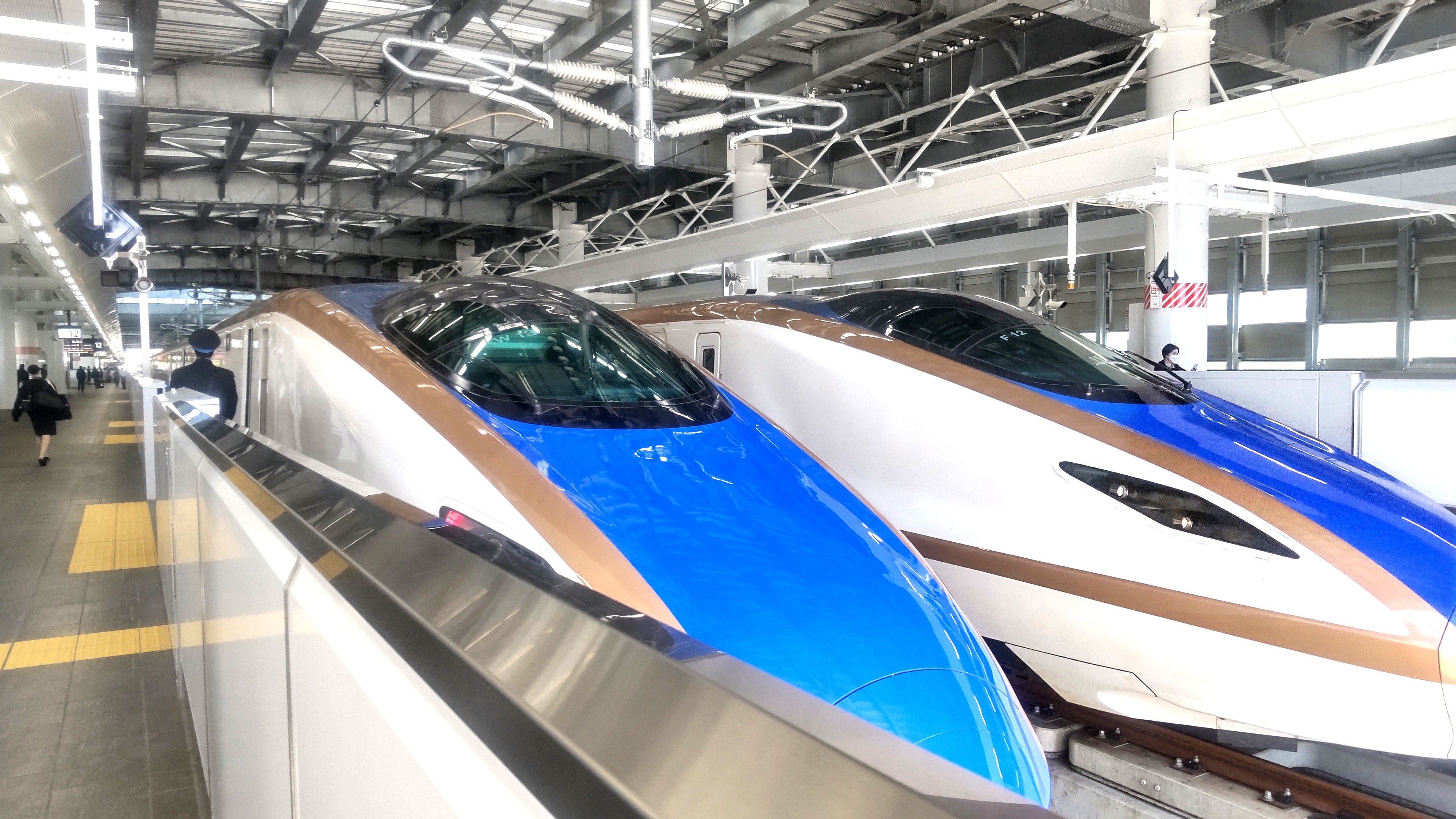 March 16, 2024
March 16, 2024
JR West (JR西日本) extended Hokuriku Shinkansen (北陸新幹線) Line from Kanazawa to Tsuruga. The fastest Kagayaki service runs between Tōkyō and Tsuruga at three hours and eight minutes. With the extension of Hokuriku Shinkansen JR West's Hokuriku Line pararell to Shinkansen was transferred to IR Ishikawa Tetsudō (IRいしかわ鉄道) (46.4km Kanazawa = Daishōji section) and Hapi-Line Fukui (ハピラインふくい) (84.3km Daishōji =Tsuruga section).
(Photo: Shinkansen trains at Tsuruga station)
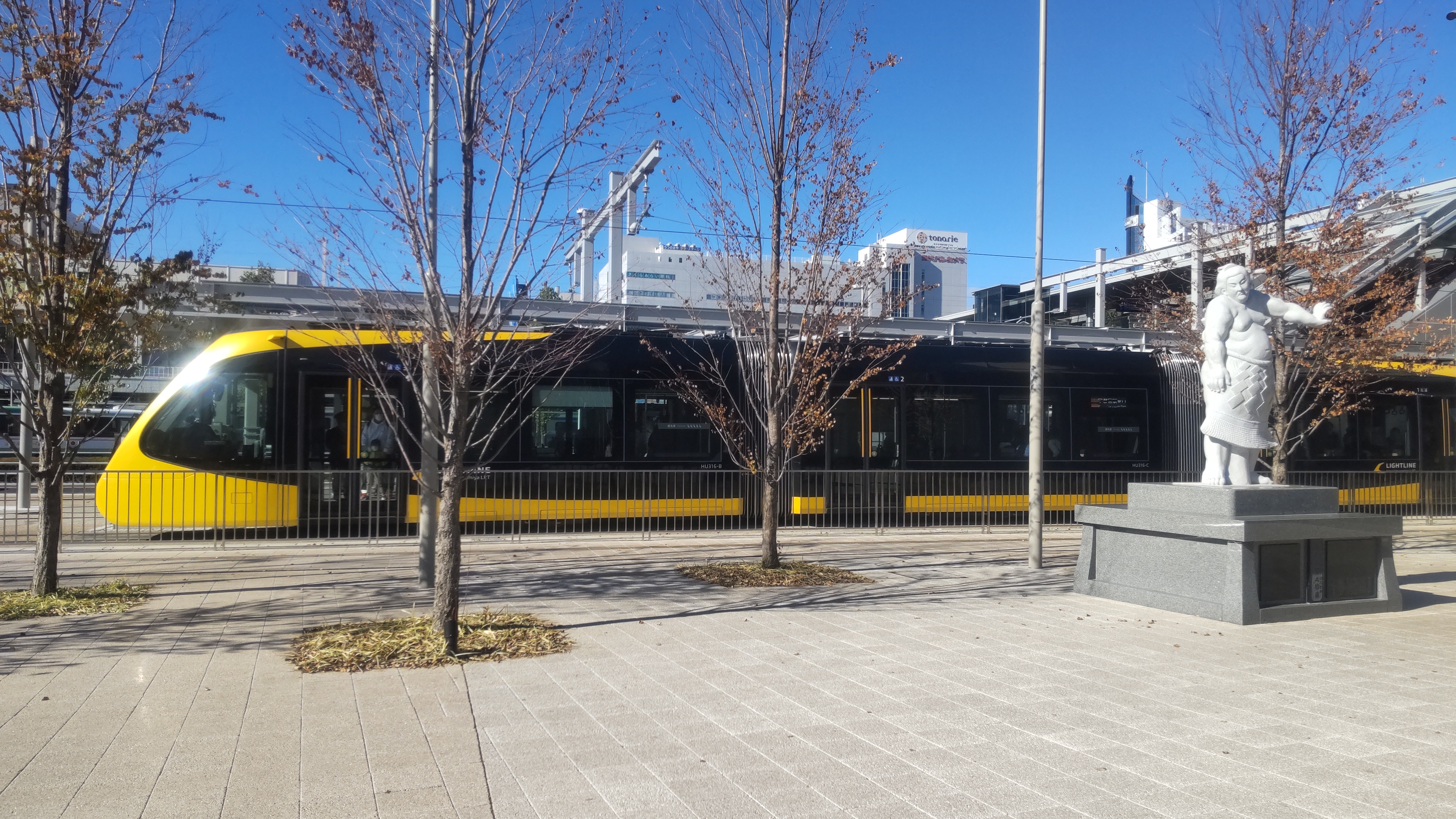 August 26, 2023
August 26, 2023
Utsunomiya Light Rail (宇都宮ライトレール) opened the 14.5km Haga Utsunomiya LRT line (宇都宮芳賀ライトレール) between Utsunomiya Station East and Haga Takanezawa Industrial Park located in Haga Town, east of Utsunomiya. The opening of a new tram in Japan is said to be the first in 75 years. Utsunomiya city is planning to extend the LRT line to the downtown on the west side of the Utsunomiya station.
(Photo: LRV at Utsunomiya Station East)
April 1, 2023
JR Hokkaidō (JR北海道) closed the 35.7 km section of Rumoi Main Line (留萌本線) between Ishikari-Numata and Rumoi as its plan to streamline the railway network. This is the second closure of the line after the 16.7 km section between Rumoi and Mashike on December 5, 2016. The remaining 14.4 km section between Fukagawa and Ishikari-Numata is scheduled to be closed in 2026.
March 27, 2023
Fukuoka Municipal Subway (福岡市営地下鉄) opened the 1.6km extended section of No.3 (Nanakuma) Line (3号(七隈)線) between Tenjin-minami and Hakata. The new Hakata station is 150m apart from the exisiting station of Ichigō (Kūkō) Line (1号(空港)線) and connected by a moving walkway. Fukuoka city is studying further extension of Nanakuma Line to the international terminal of Fukuoka Airport where the domestic terminal is served by Kūkō Line.
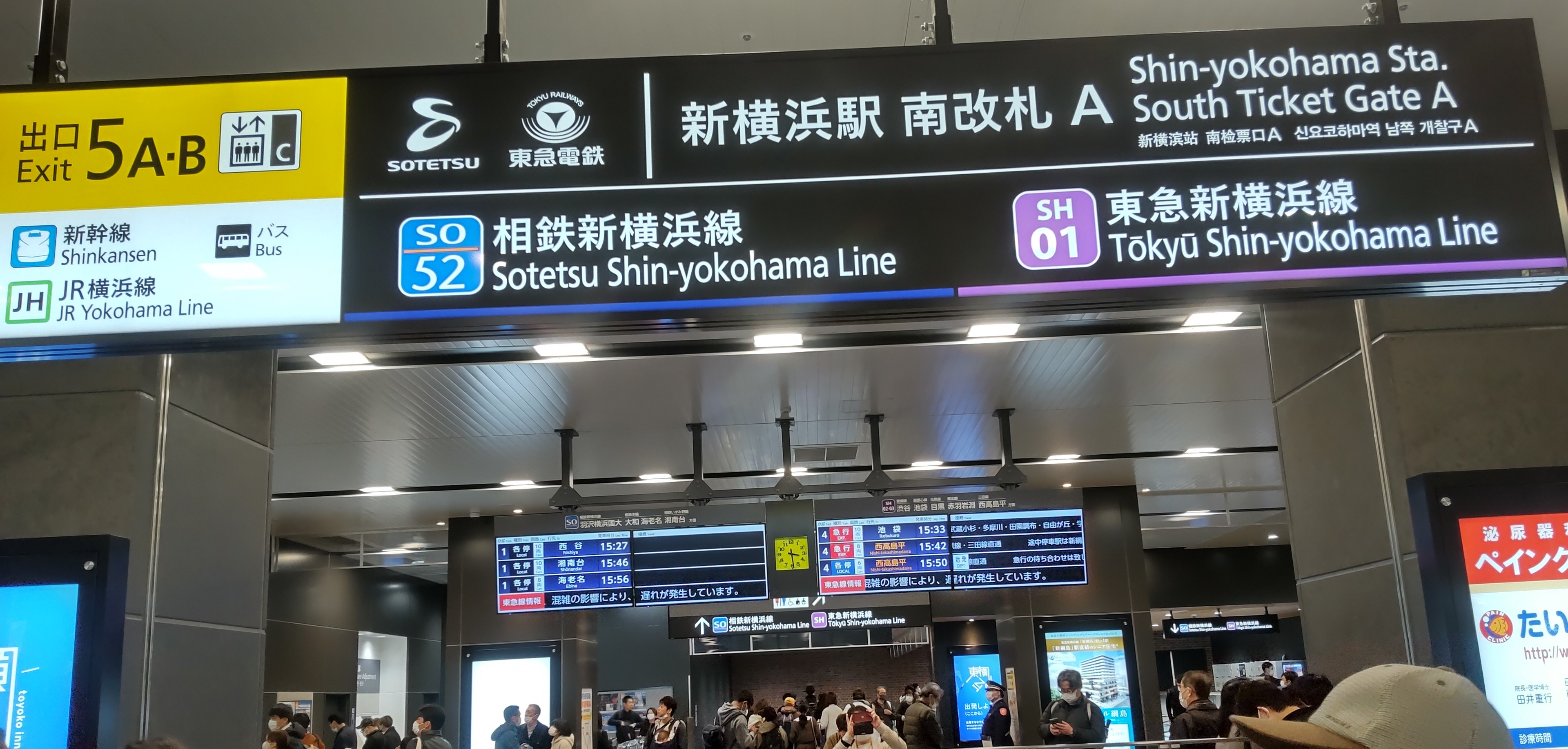 March 18, 2022
March 18, 2022
Sōtetsu made a 4.2km extension of Sōtetsu Shin-Yokohama Line (相鉄新横浜線) from Hazawa yokohama-kokudai to Shin-yokohama, and Tōkyū opened the 5.8km Tōkyū Shin-Yokohama Line (東急新横浜線) between Shin-yokohama and Hiyoshi on Tōkyū Tōyoko Line. By opening of the new lines a new railway network started involving Tōkyō Metro, Tōkyō Metropolitan Subway, Tōbu Railway and Saitama Kōsoku Tetsudō in addition to Sōtetsu and Tōkyū. At Shin-yokohama station connectios are provided with Tōkaidō Shinkansen, JR East Yokohama Line and Yokohama Municipal Subway Blue Line. (Photo: Shin-yokohama Station)
September 23, 2022
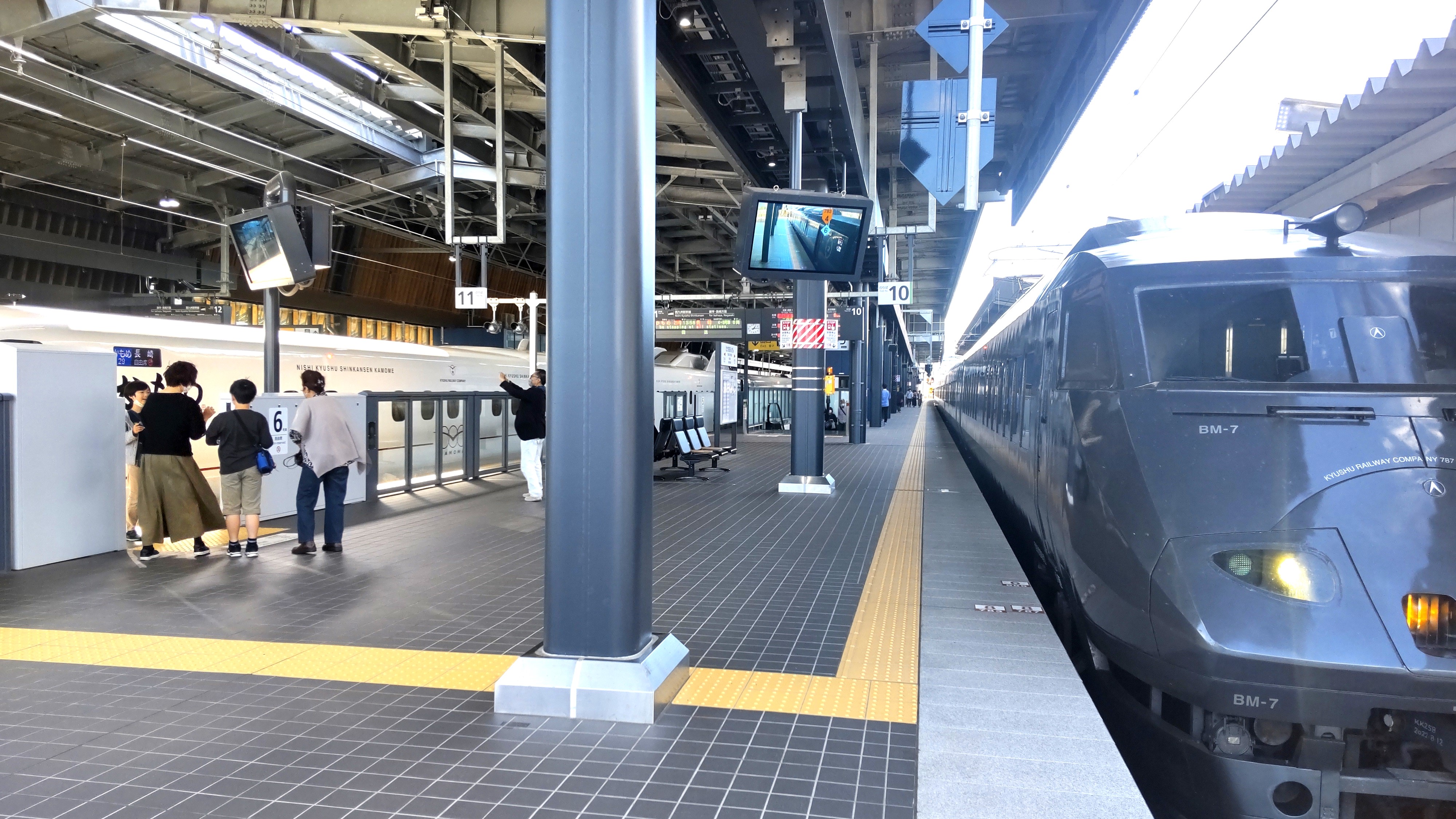 JR Kyūshū (JR九州) opened the 69.6km Nishi-Kyūshū Shinkansen (西九州新幹線) Line between Takeo-onsen and Nagasaki and started "Kamome" super express services. A cross-platform transfer is adopted at Takeo-onsen station between the arriving Limited Express "Relay Kamome" and the departing Super Express Kamome, and vice versa. With the opening of NIshi-Kyūshū Shinkansen, JR Kyūshū becomes a Class 2 operator of Nagasaki Line's 60.8km section between Kōhoku (former Hizen-Yamaguchi) and Isahaya, and the tracks and land are owned by a Class 3 Operator, Saga Nagasaki Tetsudō Kanri Center (佐賀・長崎鉄道管理センター) or Saga Nagasaki Railway Management Center, a General Incorporated Association established by Saga and Nagasaki prefectures. JR Kyūshū remains a Class 1 operator of the sections between Tosu and Kōhoku and between Isahaya and Nagasaki. (Photo: Cross-platform transfer at Takeo-onsen station)
JR Kyūshū (JR九州) opened the 69.6km Nishi-Kyūshū Shinkansen (西九州新幹線) Line between Takeo-onsen and Nagasaki and started "Kamome" super express services. A cross-platform transfer is adopted at Takeo-onsen station between the arriving Limited Express "Relay Kamome" and the departing Super Express Kamome, and vice versa. With the opening of NIshi-Kyūshū Shinkansen, JR Kyūshū becomes a Class 2 operator of Nagasaki Line's 60.8km section between Kōhoku (former Hizen-Yamaguchi) and Isahaya, and the tracks and land are owned by a Class 3 Operator, Saga Nagasaki Tetsudō Kanri Center (佐賀・長崎鉄道管理センター) or Saga Nagasaki Railway Management Center, a General Incorporated Association established by Saga and Nagasaki prefectures. JR Kyūshū remains a Class 1 operator of the sections between Tosu and Kōhoku and between Isahaya and Nagasaki. (Photo: Cross-platform transfer at Takeo-onsen station)
April 1, 2022
Fuji Kyūkō transferred the railway operations to Fuji Sanroku Denki Tetsudō (富士山麓電気鉄道), a wholly owned subsidiary formed by corporate spin-off. Fuji Sanroku Denki Tetsudō had been the corporate name since 1926 when the company was established until 1960.
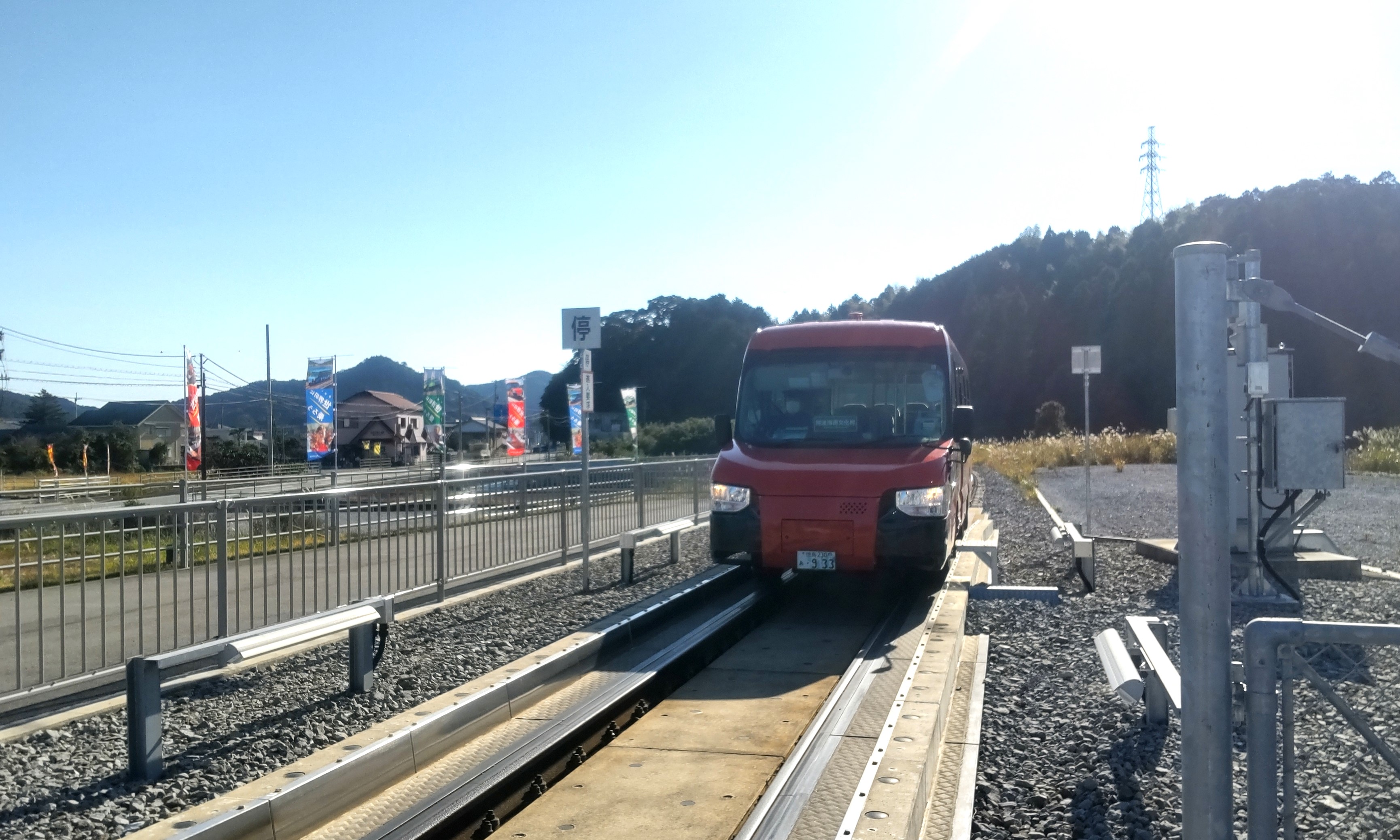 December 25, 2021
December 25, 2021
Asa Kaigan Tesudō (阿佐海岸鉄道) or Asa Coast Railway started the operation of Dual Mode Vehicle (DMV). The vehicle claimed to be world's first can run on both tracks and roads. Weekday services run neighboring areas and, on weekends, the services run 50km down to Cape Muroto in about 2 hours.
(Photo: DMV at Awa-Kainan Interchange)
December 1, 2021
Izu Hakone Tetsudō (伊豆箱根鉄道) transferred Jukkoku Cable Line to Jukkoku-toge by corporate spin-off. On February 1, 2022, Izu Hakone sold all shares of Jukkoku-toge to Fuji Kyūkō.
April 1, 2021
JR Hokkaidō (JR北海道) closed the 116.0 km section of Hidaka main line (日高本線) between Mukawa and Samani. The closed section had been halted since January 2015 due to the damage by high waves. In December 2016 JR Hokkaidō announced that it abondoned to repoen the damaged section. After long discussions with local governments involved, in September 2020 it was finally agreed that the section be replaced by a bus service.
November 1, 2020
JR Shikoku (JR四国) transferred the 1.5 km section of Mugi Line (牟岐線) between Awa-Kainan and Kaifu to Asa Kaigan Tesudō (阿佐海岸鉄道). Asa Kaigan will convert its whole line between Awa-Kainan and Kan'noura to Dual Mode Vehicle (DMV) or Road–rail vehicle which can operate both on rail tracks and a conventional road. Awa-Kainan will become a swithching point. The conversion will be completed in March 2021 and Asa Kaigan plans to extend the service to Cape Muroto on holidays.
May 7, 2020
JR Hokkaidō (JR北海道) closed the 47.6 km non-electified section of Sasshō Line (札沼線) between Hokkaidō-Iryōdaigaku and Shin-Totsukawa. The operations ended earlier on April 17 to prevent the spread of COVID-19. The closed section opened in 1935 when the north and south sections of Sasshō Line were linked. The northern section beyond Shin-Totsukawa to Ishikari-Numata was closed in 1972.
April 1, 2020
JR East (JR東日本) officially terminated the railway operations of Kesen'numa Line between Yanaizu and Kesen'numa (55.3km) and Ōfunato Line between Kesen'numa and Sakari (43.7km). The terminated sections were heavily damaged by the 2011 Tōhoku earthquake and tsunami, and has been operated by BRT (Bus Rapid Transit) since December 2012.
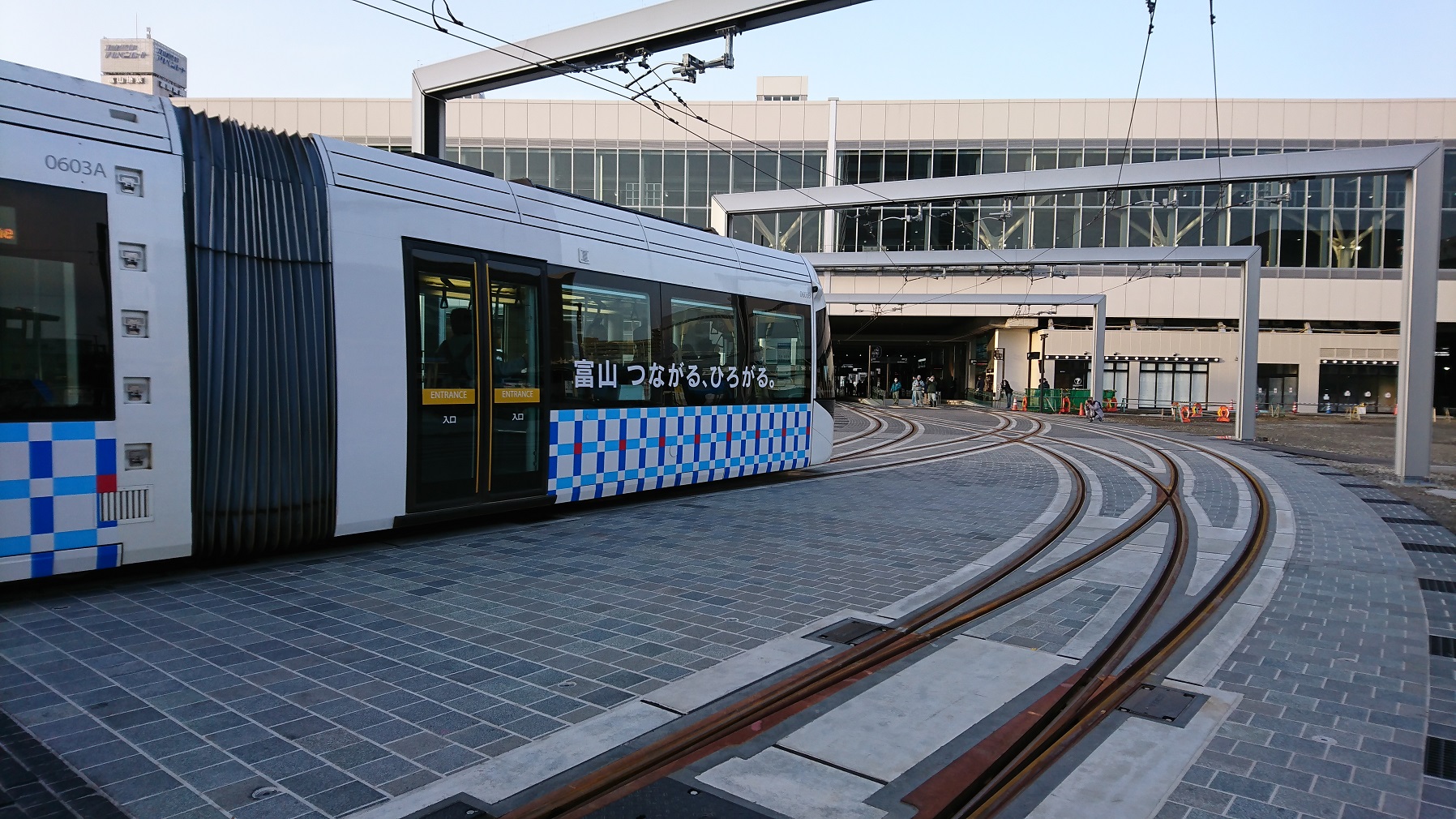
March 21, 2020
Toyama Chihō Tetsudō (富山地方鉄道) linked the tram Toyamakō Line to Toyama-eki station from the former Toyama-eki-kita station (closed), and started the through service between the north and south tram lines of Toyama city. On February 22 prior to the linking, Toyamakō Line of Toyama Lignt Rail (富山ライトレール) was transferred to Toyama Chihō Tetsudō by a merger. Toyama Light Rail opened the tram Toyamakō Line on April 29, 2006 by converting the JR West Toyamakō Line into an LRT system. The line was first built in July 1924 by the private Fugan Railway (富岩鉄道), a predecessor of Toyama Chihō Tetsudō, and was nationalized in June 1943. The line has reverted to the starting point in 77 years. (Photo: LRV running on the newly built track to the Toyama-eki station)
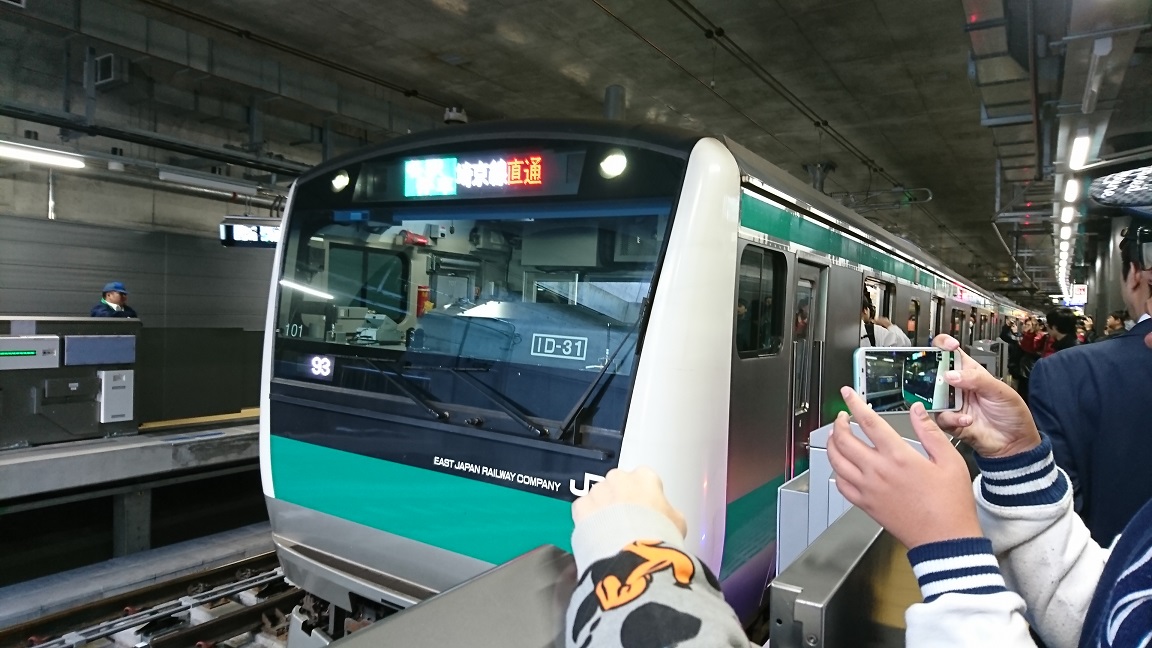
November 30, 2019
Sagami Tetsudō (Sōtetsu in short) (相模鉄道、相鉄) opened the 2.1 km Sōtetsu Shin-Yokohama Line (相鉄新横浜線) between Nishiya and Hazawa yokohama-kokudai, where it links with JR East Tōkaido Hazawa Freight Line. Trains run on the freight line and the route of Shōnan-Shinjuku Line to Shinjuku (some trains up to Ōmiya and Kawagoe). In 2022 Sōtetsu Shin-Yokohama Line will be extended to Shin-Yokohama station, connecting with Tōkyū Shin-Yokohama Line now under construction as well, and through services between Sōtetsu and Tōkyū lines will start. (Photo: Hazawa yokohama-kokudai station)

October 1, 2019
Okinawa Toshi Monorail (沖縄都市モノレール), also known as "Yui Rail" (ゆいレール), extednd the astraddle monorail line by 4.1 km from Shuri to Tedako-Uranishi with four stations newly opened. (Photo right: Trains running on the newly build tracks between Kyōzuka and Urasoe-maeda stations)
April 1, 2019
JR Hokkaidō (JR北海道) closed the 16.1 km of Sekishō Line (石勝線) between Shin-Yūbari and Yūbari. The line opened in 1892 as Yūbari Line (夕張線) from Oiwake to Yūbari for transporting coal to the Port of Muroran via the Muroran main line. With the opening of Sekisho Line in 1981, Yubari Line has become a part of the Sekisho Line and the closed section has been called Yūbari Brandh Line (夕張支線). The neigbouring population and number of passengers have decreased sharply after the coal mines were closed. The Yūbari Branch Line was included in the three immediate sections to be switched to bus services among the lines claimed by JR Hokkaidō difficult to maintain by itself.
JR Freight (JR貨物) abondoned the 2.7 km Hokuriku Freight Branch Line (北陸線貨物支線) between Tsuruga and Tsuruga-minato. The Tsuruga-minato station opened in 1882 as Kanagasaki station. The passenger service terminated in 1897 and the station was renamed Tsuruga-minato in 1919. The station was served, however, by the boat train from Tokyo stationto make connection with a passenger ship to the port of Vladibostok whenever it was operated before the World War 2. When JNR became divided and privatalized and in 1987, the branch line was succeeded to JR Freight, but the operation of freight trains terminated in 2009.
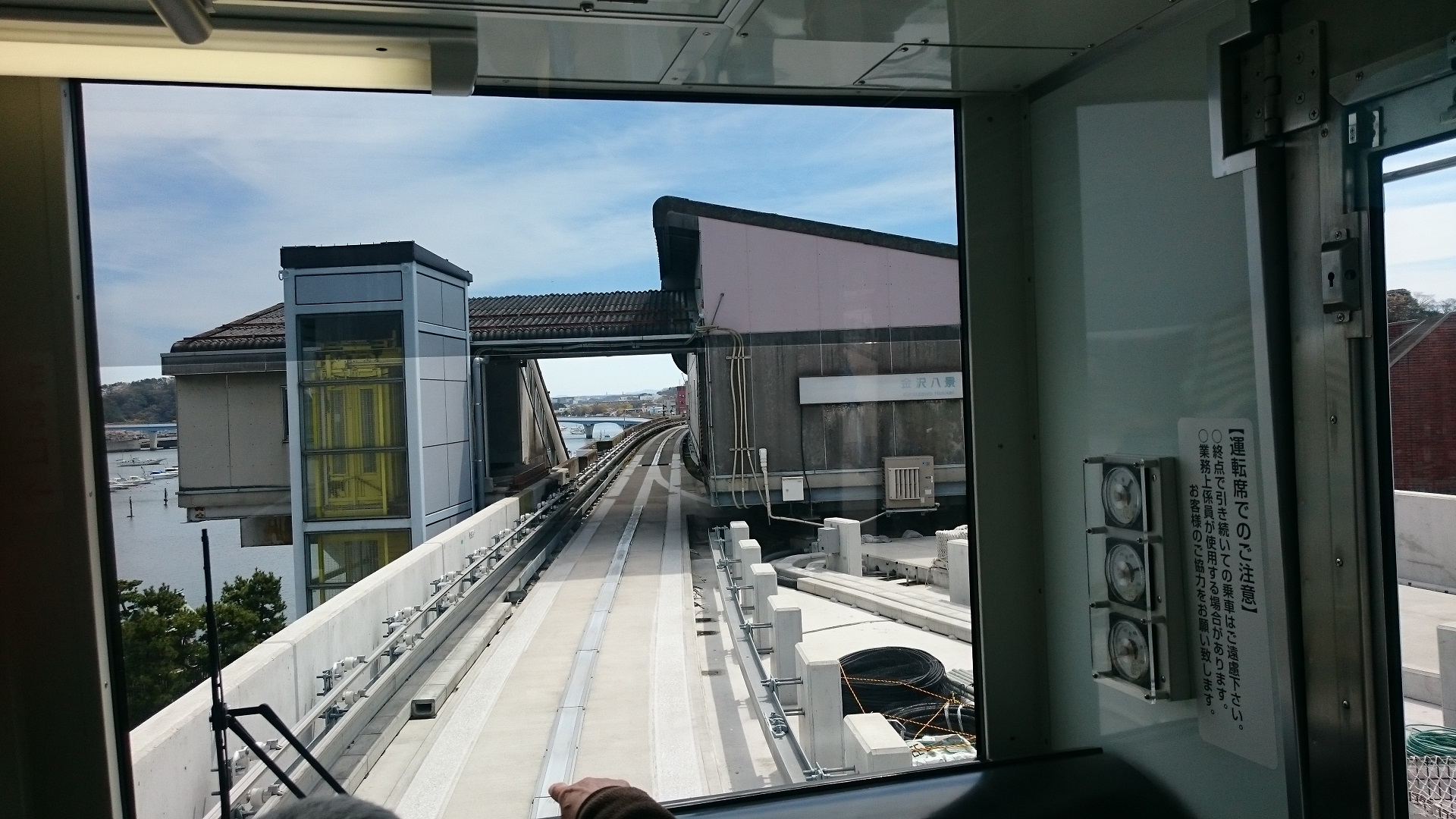 March 31, 2019
March 31, 2019
Yokohama Seaside Line (横浜シーサイドライン) opened new Kanazawa-Hakkei station adajacent to the station of Keihin Kyūkō, and the line was extended by 0.2km. (Photo left: Train approaching the old Kanazawa-hakkei station)
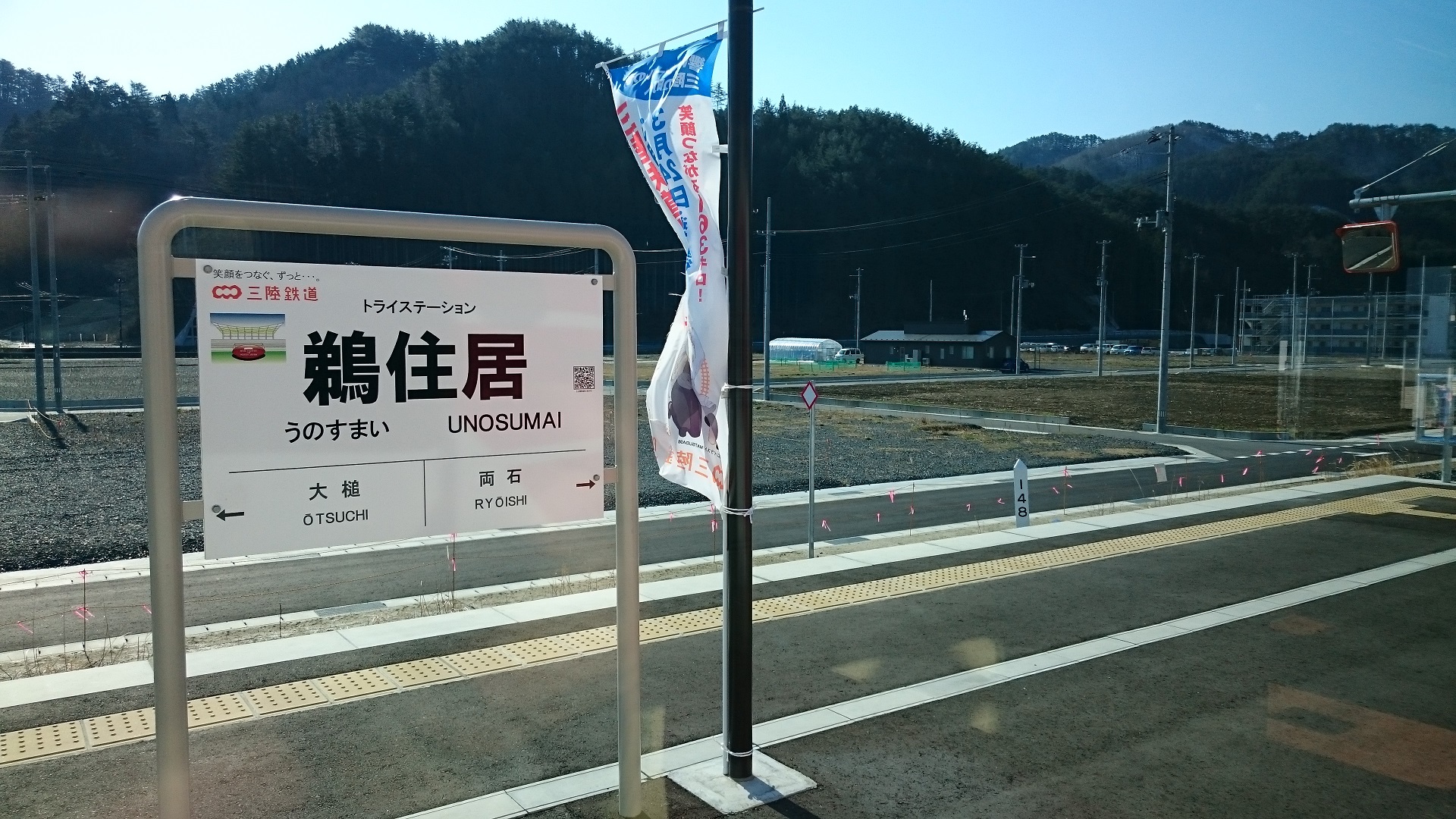 March 23, 2019
March 23, 2019
JR East (JR東日本) rebuilt the Miyako = Kamaishi section of the Yamada Line haevily damaged by the 2011 Tōhoku earthquake and tsunami. Upon completion the rebuilt section was transferred to Sanriku Railway (三陸鉄道), which will operate the section as a part of the 163.0 km Riasu (Lias) Line between Kuji and Sakari connecting the former Kita- and Minami-Riasu Lines. On March 23, special trains run commemorating the restoration, and regular passenger service starts on March 24. (Photo right: Unozumai station)
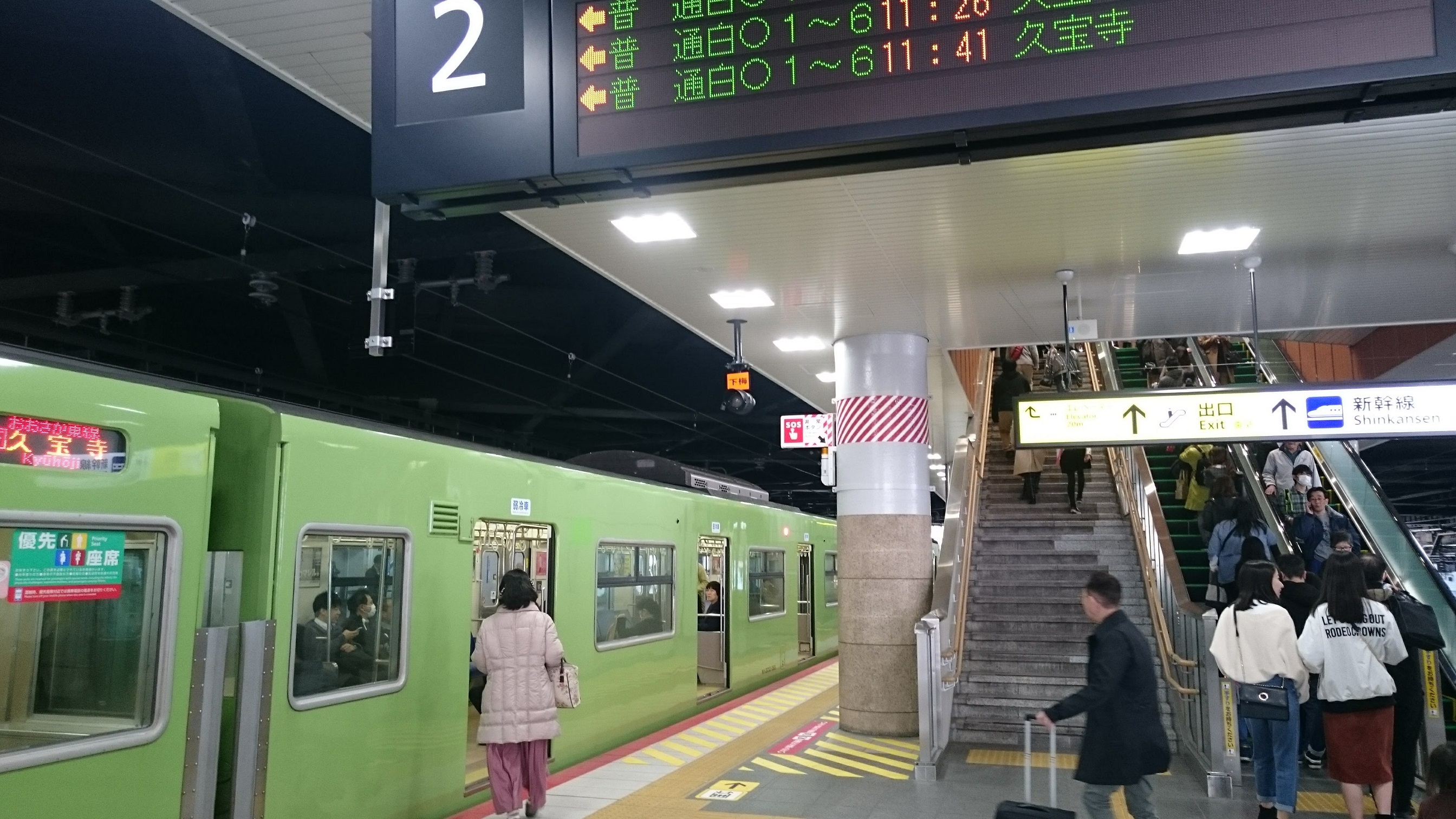 March 16, 2019
March 16, 2019
JR West (JR西日本) opened the 11.1 km northern part of Ōsaka-higashi Line (おおさか東線) between Shin-Ōsaka and Hanaten. The southern part between Hanaten and kyūhoji was opened on March 15, 2008. JR West is a Class 2 operator in the extended part as well as in the sourthern part. Ōsaka Soto-kanjo Tetsudō (大阪外環状鉄道) owns as a Class 3 Operator the double track passenger line built using the exsiting track of freight branches of Tokaido and Katamachi Lines. (Photo left: Shin-Osaka station)
December 1, 2018
Kansai Electric Power Company (KEPCO) (関西電力) closed the 6.1 km trolleybus line between Ōgisawa and Kurobe-dam, a part of the Tateyama Kurobe Alpine Route. The trolleybus service from April to November started operation on August 1, 1964, using the tunnel originally built as access for the construction of the hydroelectric plant of Kurobe Dam. The service will be replaced with battery buses in April 2019.
April 1, 2018
Due to the decreasing number of passengers, JR West (JR西日本) closed the 108.1 km Sankō Line (三江線) between Miyoshi and Gōtsu with the last trains operating on March 31, the largest line closure since the closing of 140.0 km Hokkaidō Chihoku Kōgen Tetsudō on April 21, 2006. The Sankō Line was extended in several phases, southeast from Gōtsu as Sankō-Hoku Line (三江北線) since the Gōtsu = Kawado section opened in 1930, and northwest from Miyoshi as Sankō-Nan Line (三江南線) since the Miyoshi = Shikijiki section opened in 1955. In 1975 the line was completed as the Kuchiba = Hamahara section opened.
Osaka Municipal Transportation Bureau (大阪市交通局) was privatized into Ōsaka Kōsoku Denki Kidō (大阪市高速電気軌道) or Osaka Rapid Electric Tramway, a limited stock corporation. The new entity also called Osaka Metro will take over the operations of eight subway lines in the city of Ōsaka and the adjacent municipalities as well as Nankō Port Town Line, an automated guideway transit.
April 1, 2017
Kintetsu transferred to Iga Municipal Government free of charge the railway tracks and rolling stocks and status as a Class 3 operator of Iga Tetsudō (伊賀鉄道) .
JR East (JR東日本) increased by 0.6km the operation kilometer of Komagamine = Hama-Yoshida section of Jōban Line. The section was reopened on December 10, 2016 after the track had been rerouted and elevated at tsunami-proof level.
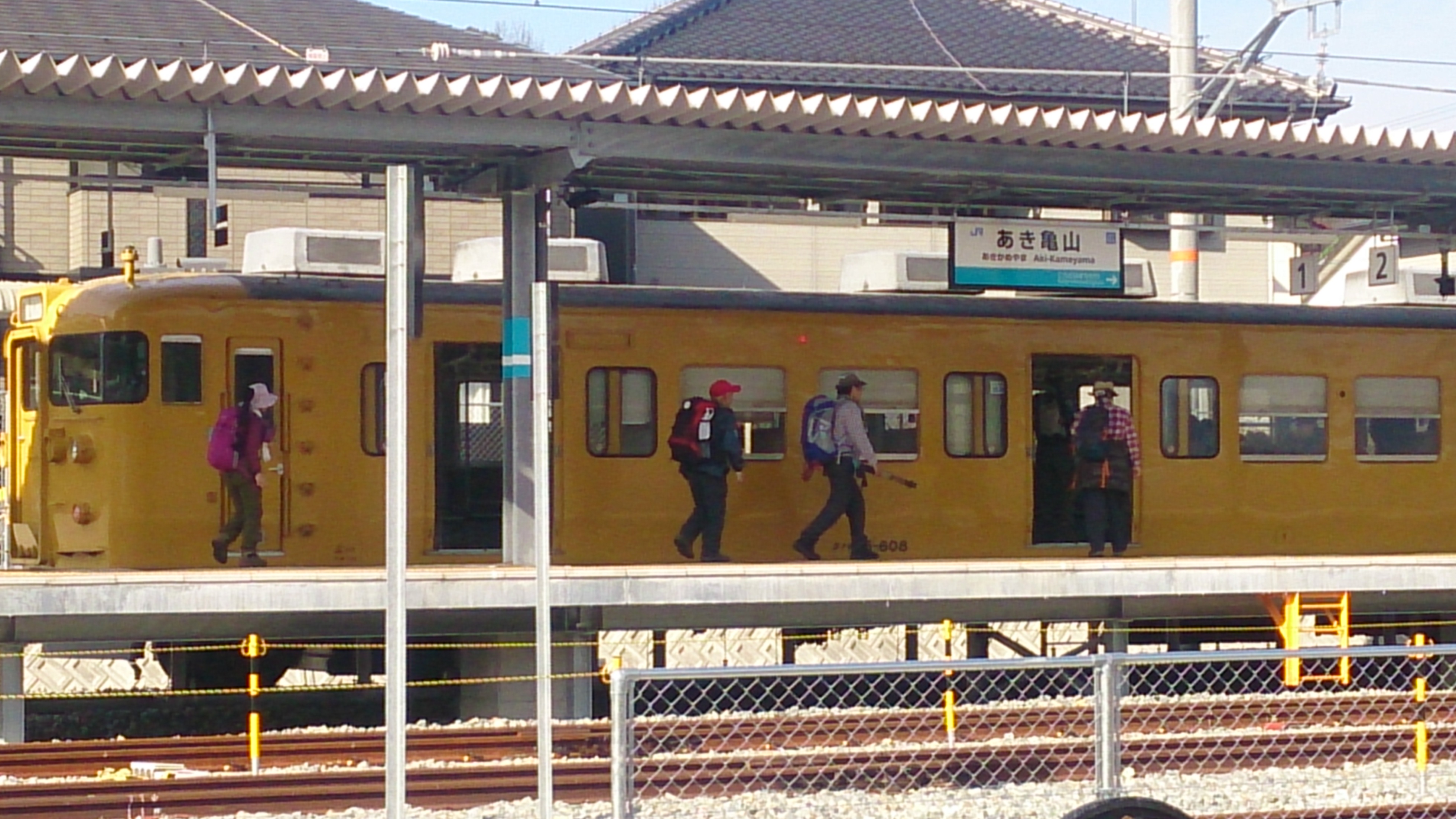 March 4, 2017
March 4, 2017
JR West (JR西日本) extended Kabe Line from Kabe to Aki-Kameyama, by reopening and electrifying the 1.6km section of the former Kabe Line tracks closed on December 1, 2003. Aki-Kameyama (あき亀山) station is 5km apart from the closed Aki-Kameyama (安芸亀山) station of the former Kabe Line. (Photo right: Aki-Kameyama station)
December 5, 2016
JR Hokkaidō (JR北海道) closed the 16.7 km section of Rumoi Main Line (留萌本線) between Rumoi and Mashike with the last trains operating on December 4. The remaining Fukagawa = Rumoi section is included in the three immediate sections to be switched to bus services announced by JR Hokkaidō on November 18. JR Hokkaidō claims that about half of the current railway network is difficult to maintain by itself. The company intends to close the sections where the average daily number of passengers per kilometer is below 200, and for other sections to start the talks with the local governments on the sharing the operation cost.
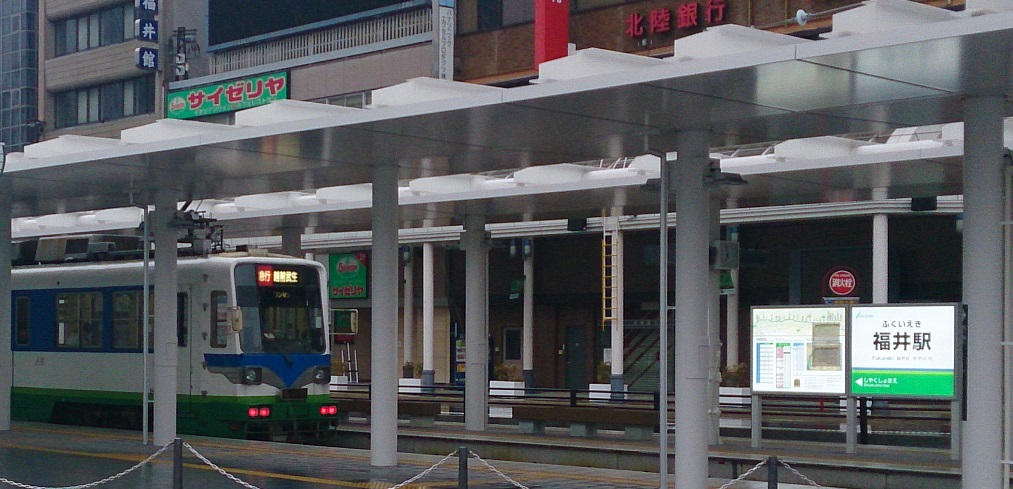 March 27, 2016
March 27, 2016
Fukui Tetsudō (福井鉄道) extended the tram line by 140 meter to JR Fukui station and the name of the tram station was changed ftom Fukui-ekimae to Fukui-eki. Following Man'yō-sen and Toyama Chihō Tetsudō, three tram operators in Hokuriku area extended the tram lines to JR stations. On the same day Fukui Tetsudō started through services with Echizen Tetsudō between Echizen-Takefu and Washizuka-Haribara stations. (Photo left: Fukui-eki stop)
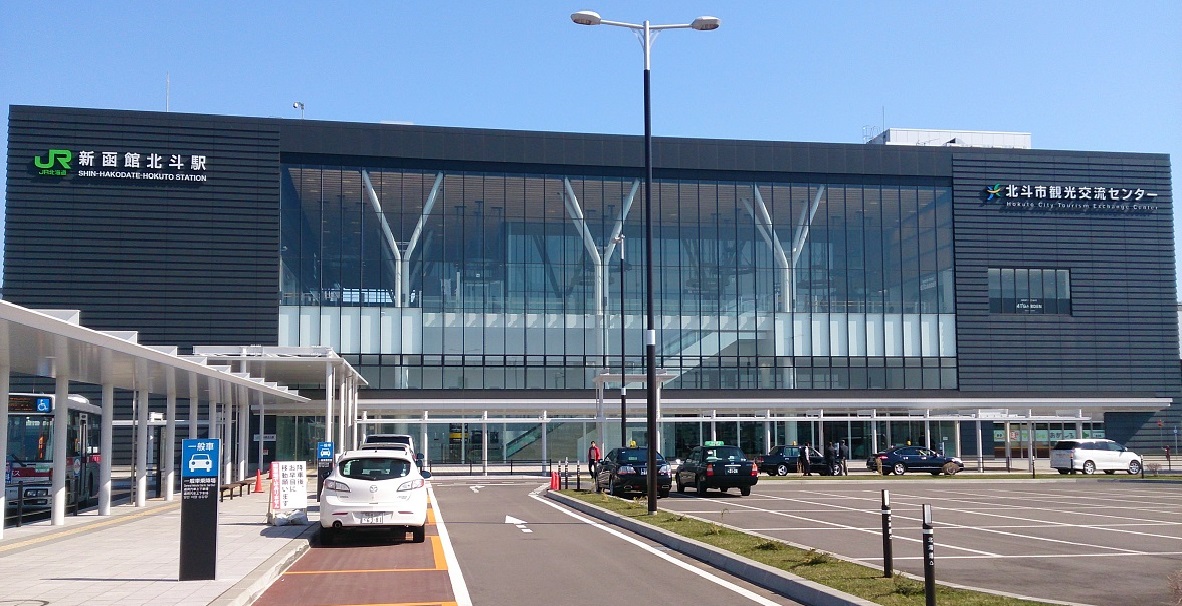 March 26, 2016
March 26, 2016
JR Hokkaidō (JR北海道) opened Hokkaidō Shinkansen (北海道新幹線) Line between Shin-Aomori and Shin-Hakodate-Hokuto, 18km north of Hakodate station). It links with Tōhoku Shinkansen of JR East at Shin-Aomori and the fastest Hayabusa service runs between Tōkyō and Shin-Hakodate-Hokuto at four hours and two minutes. The maximum speed of the shinkansen train is limited at 140km/h through Seikan Tunnel which it shares with freight trains with dual gauge of 1,435 mm and 1,067 mm. With the opening of Hokkaidō Shinkansen JR Hokkaidō's Esashi Line was transferred to Dōnan Isaribi Tetsudō (道南いさりび鉄道) and the regular passenger service of Kaikyō Line was suspended. (Photo right: Shin-Hakodate-Hokuto station)
January 31, 2016
Hankai Denki Kidō (阪堺電気軌道) closed a 0.2km terminal section of the tram Uemachi Line (上町線) between Sumiyoshi and Sumiyoshi-kōen on which the train was running only in the morning. The operator decided to abondon the section because it requires several hundred million yen to renovate the aging tracks.
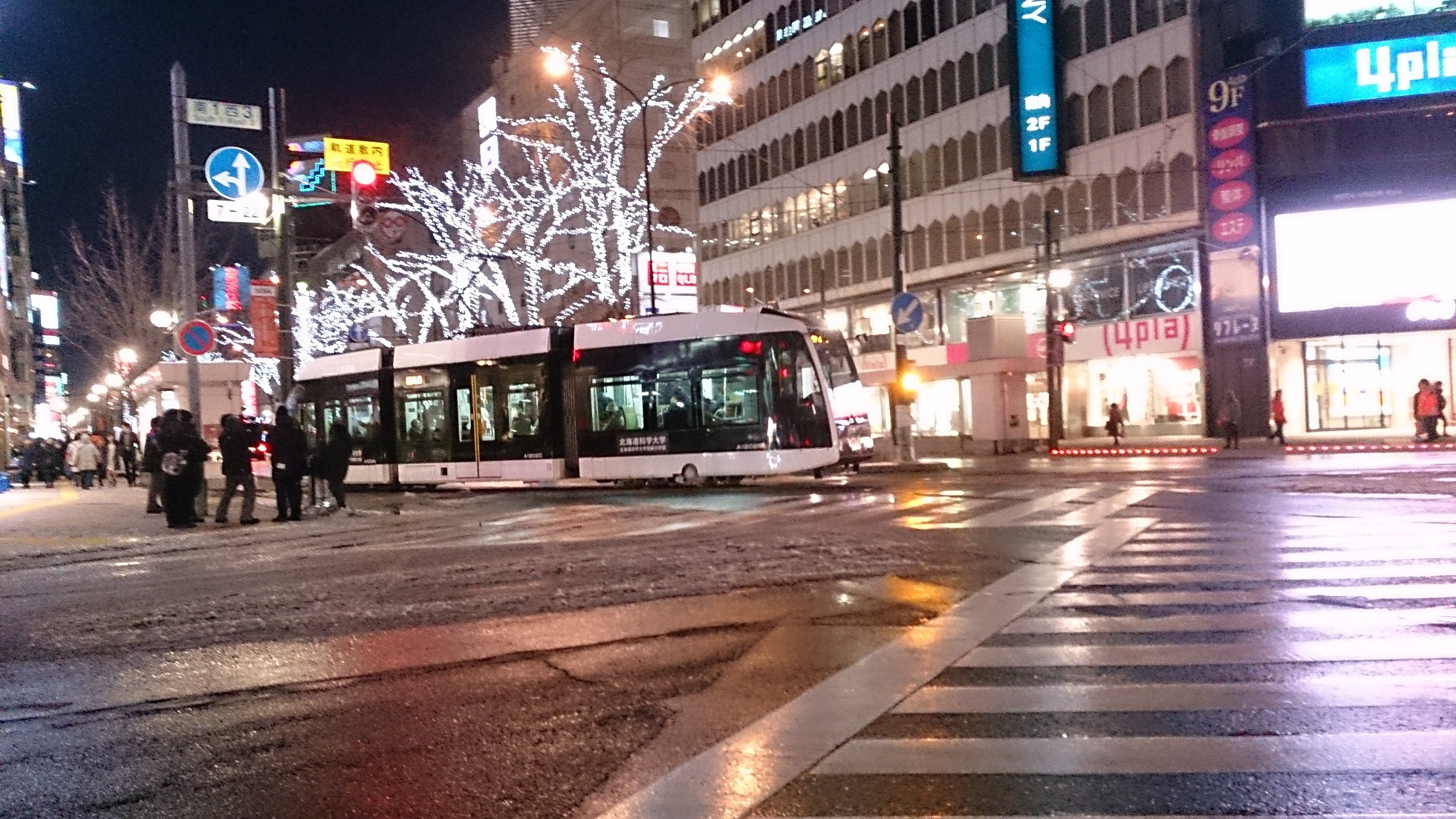 December 20, 2015
December 20, 2015
Sapporo Municipal Transportation Bureau (札幌市交通局) opened a new 0.4km Toshin Line (都心線) of the tram, linking between the two terminals of the existing line, Nishi-Yon-chome and Susukino, and started a loop traffic service. (Photo left: Train at Nishi-Yon-chome stop)
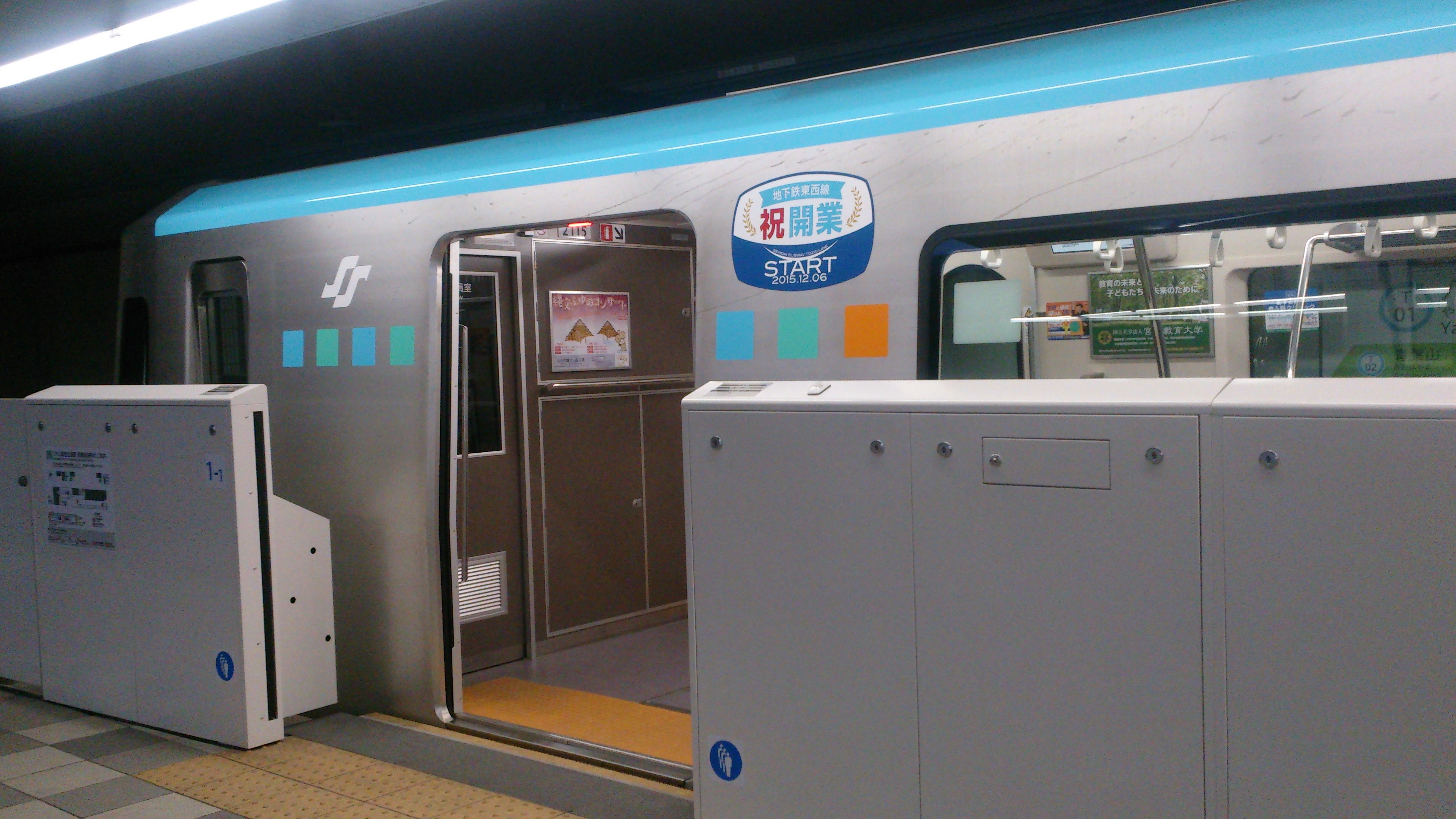 December 6, 2015
December 6, 2015
Sendai Municipal Subway (仙台市営地下鉄) opened a new 13.9km subway line, Tōzai (east west) Line (東西線) between Yagiyama-Dōbutsu Kōen and Arai. The Tōzai Line is Sendai's second subway line next to Namboku (south north) Line which crosses the new line at Sendai station and is the fourth Tōzai Subway Line next to Tōkyō, Sapporo and Kyōto. (Photo right: Ttrain at Arai station)
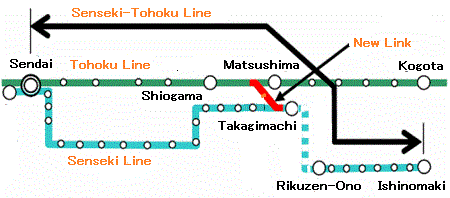 May 30, 2015
May 30, 2015
JR East (JR東日本) started the "Senseki-Tōhoku Line" through services between Sendai and Ishinomaki. The train runs on the newly opened 0.3 km track linking Tōhoku Line with Senseki Line between Matsushima and Takagimachi (The train runs directly Shiogama to Takagimachi without call on Matsushima station) and rerouted Takagimachi = Rikuzen-Ono section. Since the electrification method is different between Tōhoku Line (20 kV AC, 50Hz) and Senseki Line (1,500 V DC), the services use hybrid DMU trains.
April 1, 2015
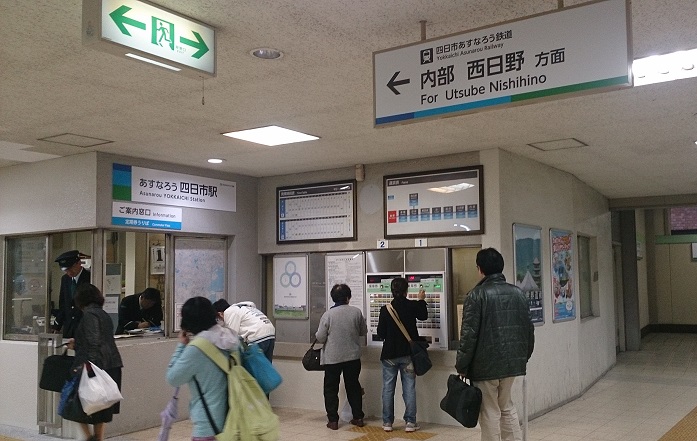 The operations of Kita-Kinki Tango Tetsudō and Kintetsu Utsube and Hachiōji Lines were transferred to Willer Trains and Yokkaichi Asunarō Tetsudō, respectively, under the government scheme of reformation and activation of the local traffic.
The operations of Kita-Kinki Tango Tetsudō and Kintetsu Utsube and Hachiōji Lines were transferred to Willer Trains and Yokkaichi Asunarō Tetsudō, respectively, under the government scheme of reformation and activation of the local traffic.
Willer Trains, a division of Willer Aliance which conducts highway bus services, was selected by public invitation and operates the railway now called Kyōto Tango Tetsudō or Tantetsu, as a Class 2 Operator while the tracks remains the propety of Kita-Kinki Tango Tetsudō as a Class 3 Operator.
Kintetsu proposed to Yokkaichi Municipal Government to convert the 762 mm gauge Utsube and Hachioji Lines to a BRT (Bus Rapid Transit). The local municipality, which desired to continue the railway service, owns the tracks as a Class 3 Operator. Yokkaichi Asunarō Tetsudō, a Class 2 Operator, is a "third-sector" company formed by Kintetsu and the local municipality. (Photo right: Asunarō Yokkaichi station)
March 14, 2015
Hokuriku Shinkansen (北陸新幹線) Line was extended from Nagano to Kanazawa. The fastest Kagayaki Superexpress runs between Tōkyō and Kanazawa in 2 hours and 28 minutes, reduced by 1 hour and 19 minutes. JR East (JR東日本) operates the new line upto Jōetsu-Myōkō (59.5km) and JR West (JR西日本) beyond Jōetsu-Myōkō to Kanazawa (168.6km). Conventional lines pararell to Shinkansen were separated from JR East and JR West and transferred to "third-sector" companies established mainly by the respective prefectural governments as follows:
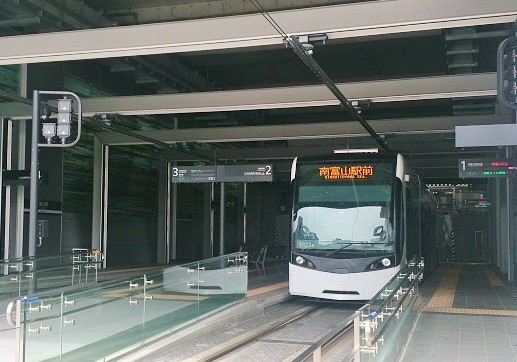
With the opening of Shinkansen Toyama station, Toyama Chihō Tetsudō (富山地方鉄道) extended the tram line by 160 meter to Toyama-eki station just beneath the station. The extension is a part of the plan to link the line to Toyama-kita station of Toyama Lignt Rail (富山ライトレール) and to start the through service. (Photo right: Train at Toyama-eki stop)
May 12, 2014
JR Hokkaido (JR北海道) closed the 42.1 km section of Esashi Line (江差線) between Kikonai and Esashi. The remaining Goryokaku = Kikonai section, now a part of the trunk line between Honshu and Hokkaido, will be transferred to a third sector company when the initial Shin-Aomori to Shin-Hakodate section of Hokkaido Shinkansen opens in March 2016.
April 1, 2014
JR East (JR東日本) officially closed the 38.4 km Iwaizumi Line (岩泉線) between Moichi and Iwaizumi in Iwate Prefecture. The operation has been halted since July 31, 2010 after the train was derailed due to a landslide. JR East abondoned the restoration because of the cost required in constrast with the least number of passengers among railways of Japan in 2008.
March 19, 2014
Man'yō-Sen (万葉線) extended the tram line by 100 meter to JR Takaoka station and the name of the tram station was changed ftom Takaoka-ekimae to Takaoka-eki.
April 1, 2012
Towada Kankō Dentetsu (十和田観光電鉄) closed the railway line between Towada-shi and Misawa. Towada Tetsudō (十和田鉄道) opened the line between Furumagi (later renamed Misawa) and Sanbongi (later renamed Towada-shi) in 1922 as a light railway of 762mm gauge. The line was regauged to 1067 mm and electrified in 1951. As number of passengers decreased 1.6 million in 1970 to 0.5 million in 2010, the company decided to "bustitute" the railway.
Nagano Denyetsu (長野電鉄) closed the 35.3 km Yashiro Line (屋代線) between Yashiro and Suzaka. Opened by Kato Tetsudō (河東鉄道) in 1922 which later merged with Nagano Denki Tetsudō (長野電気鉄道) and renamed Nagano Dentetsu, the line was electrified and became a part of Kato Line in 1926. Through express trains of JNR between Ueno and Yudanaka had run the line from 1962 until 1982.
March 27, 2011
Nagoya Municipal Subway (名古屋市営地下鉄) opened the 4.2 km new section of Rokugo (Sakuradori) Line (6号(桜通)線) between Nonami and Tokushige.
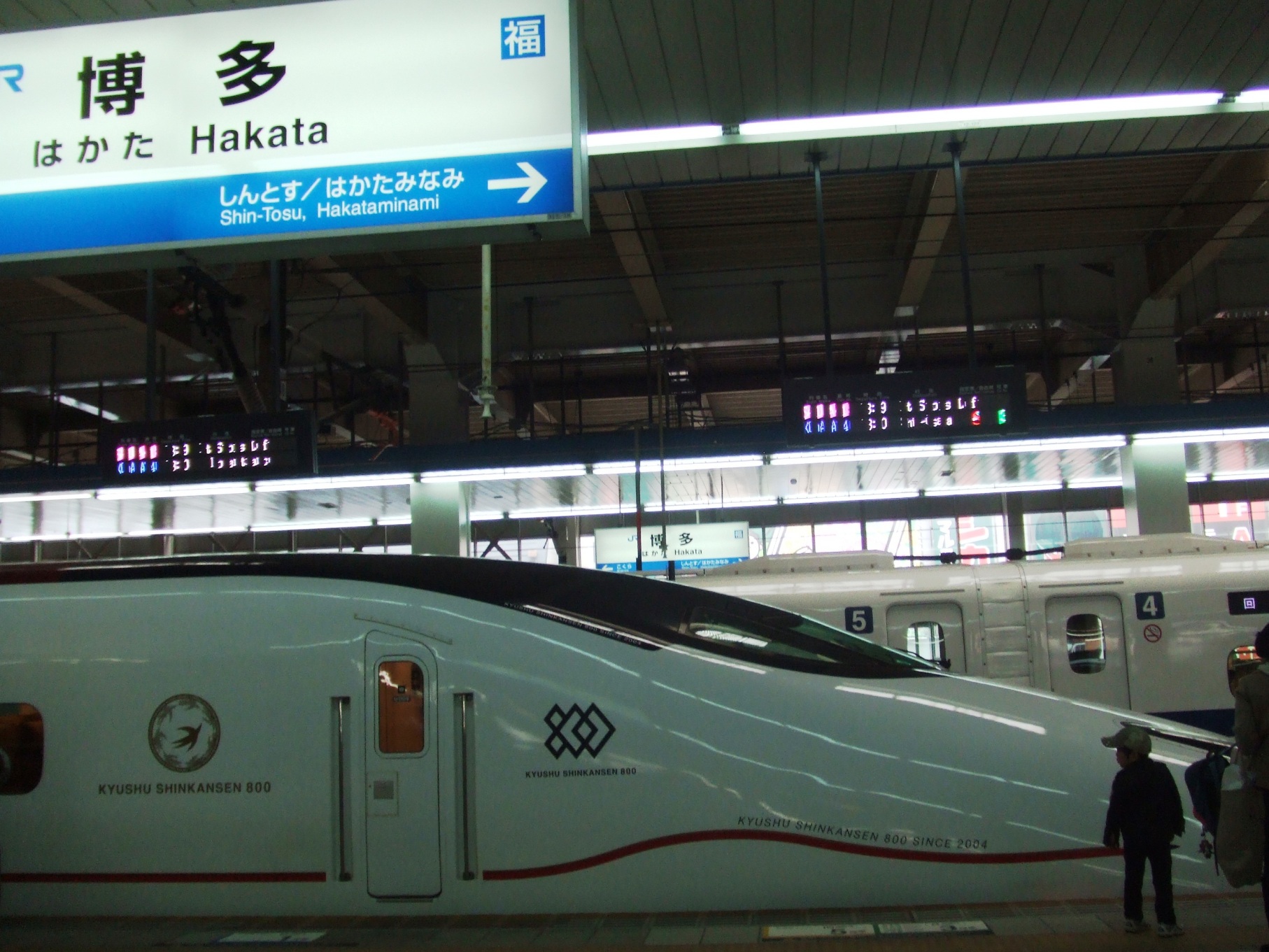 March 12, 2011
March 12, 2011
JR Kyūshū (JR九州) opened the Hakata = Shin-Yatsushiro section of Kyūshū Shinkansen (九州新幹線) Line and started a through operation with JR West San'yo Shinkansen. The fastest Mizuho Superexpress runs between Shin-Ōsaka and Kagoshima-Chūō in 3 hours and 45 minutes and between Hakata and Kagoshima-Chūō in 1 hours and 19 minutes, a reduction of 1 hour 17 minutes and 53 minutes, respectively. The pararell Kagoshima Line has remained in JR Kyūshū. (Photo right: 800 series train at Hakata Station)
December 4, 2010
JR East (JR東日本) extended Tōhoku Shinkansen (東北新幹線) Line from Hachinohe to Shin-Aomori. The fastest Hayate Superexpress runs between Tōkyō and Shin-Aomori in 3 hours and 20 minutes, reduced by 39 minutes. Tōhoku Line's pararell section between Hachinohe and Aomori was transferred to Aoimori Tetsudō (青い森鉄道), a third sector company, which started the passenger service of the Metoki = Hachinohe section transferred from JR East on December 2002 when Tōhoku Shinkansen was extended to Hachinohe. Aoimori Tetsudō is a Class 2 Operator and Aomori Prefectural Government owns the tracks as a Class 3 Operator.
October 1, 2010
The operation scheme of Kōbe Kōsoku Tetsudō, a Class 3 Operator, has been changed. Using the tracks built by Kobe Kōsoku, Hankyū (San'nomiya = Nishidai, but no traffic between Shinkaichi and Nishidai), Hanshin (Motomachi = Nishidai), San'yo Dentetsu (Nishidai = San'nomiya and Kōsoku-Kobe = Motomachi) and Kobe Dentetsu (Shinkaichi= Minatogawa) had operated as Class 2 Operators. While the throght traffic of trains has not been changed, the Class 2 Operation of Hankyū's Shinkaichi = Nishidai section and all San'yo sections was officially discontinued as of October 1, 2010,
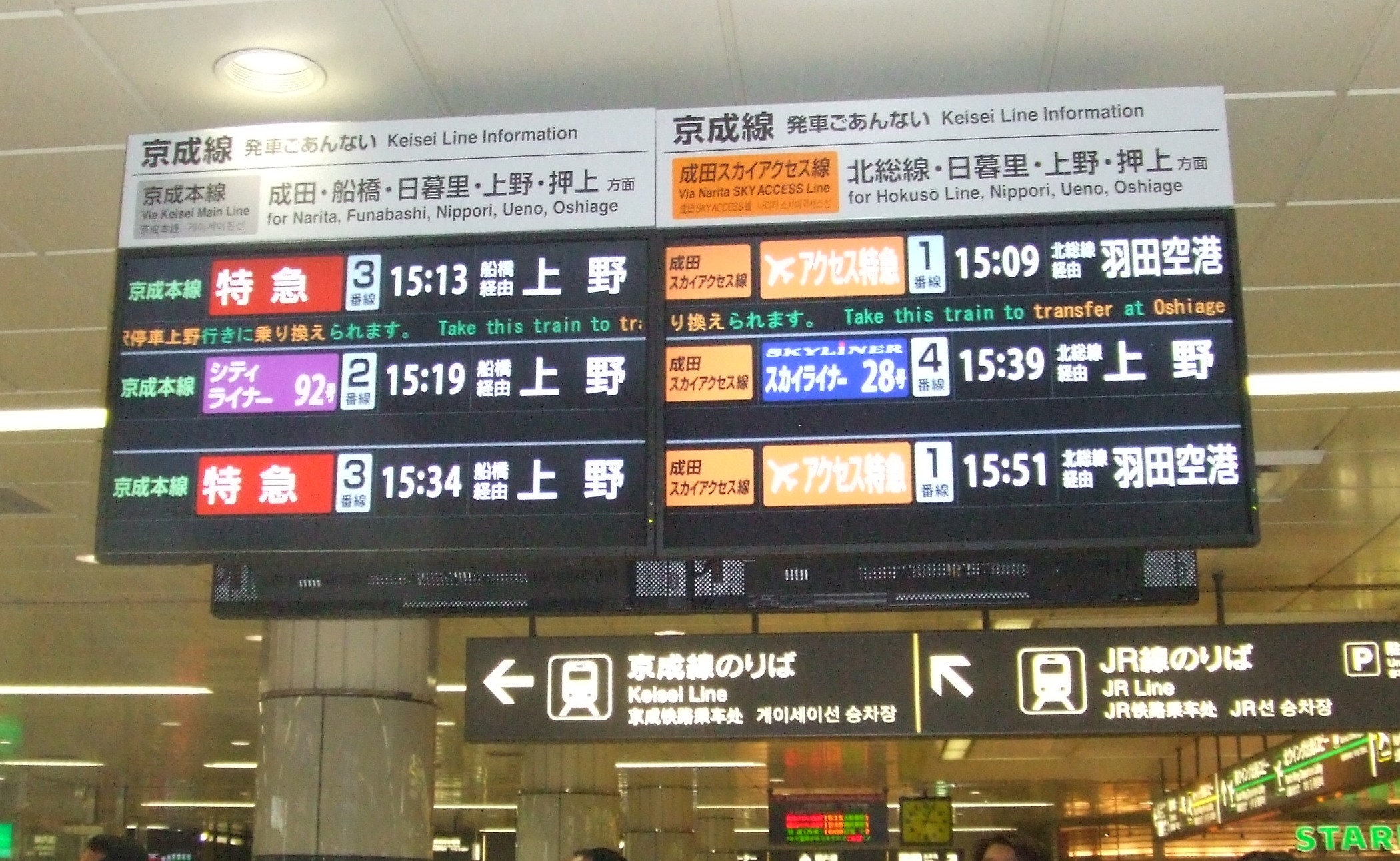 July 17, 2010
July 17, 2010
Keisei Dentetsu (京成電鉄) started passenger services of the 51.4 km Narita kūkō Line (成田空港線) between Keisei-Takasago and Narita kūkō, a short-cut route to Narita Airport called Narita Sky Access. Keisei operates "Sky Liner" and "Access Tokkyū" as a Class 2 operator using the tracks owned by Hokuso Tetsudō (北総鉄道) (Class 1: Keisei-Takasago = Komuro, 19.8km), Chiba New Town Tetsudō (千葉ニュータウン鉄道) (Class 3: Komuro = Inba-Nihon-idai, 12.5km), Narita Kōsoku Tetsudō Access (成田高速鉄道アクセス) (Class 3: Inba-Nihon-idai = Narita-kūkō-Kōsoku-Tetsudō-Setsuzokuten, 10.7km) and Narita kūkō Kōsoku Tetsudō (成田空港高速鉄道) (Class 3: Narita-kūkō-Kōsoku-Tetsudō-Setsuzokuten = Narita-kūko, 8.4km). The Narita Kōsoku Tetsudō Access section was newly built. In the Narita kūkō Kōsoku Tetsudō section, a new track was built in pararell to the JR line upto kūkō-daini-biru station and the kūkō-daini-biru = Narita-kūkō section uses the existing track of Keisei Line. Hokusō Tetsudō continues to operate the existing Keisei-Takasago = Inba-Nihon-idai section. (Photo left: Narita kūkō station)
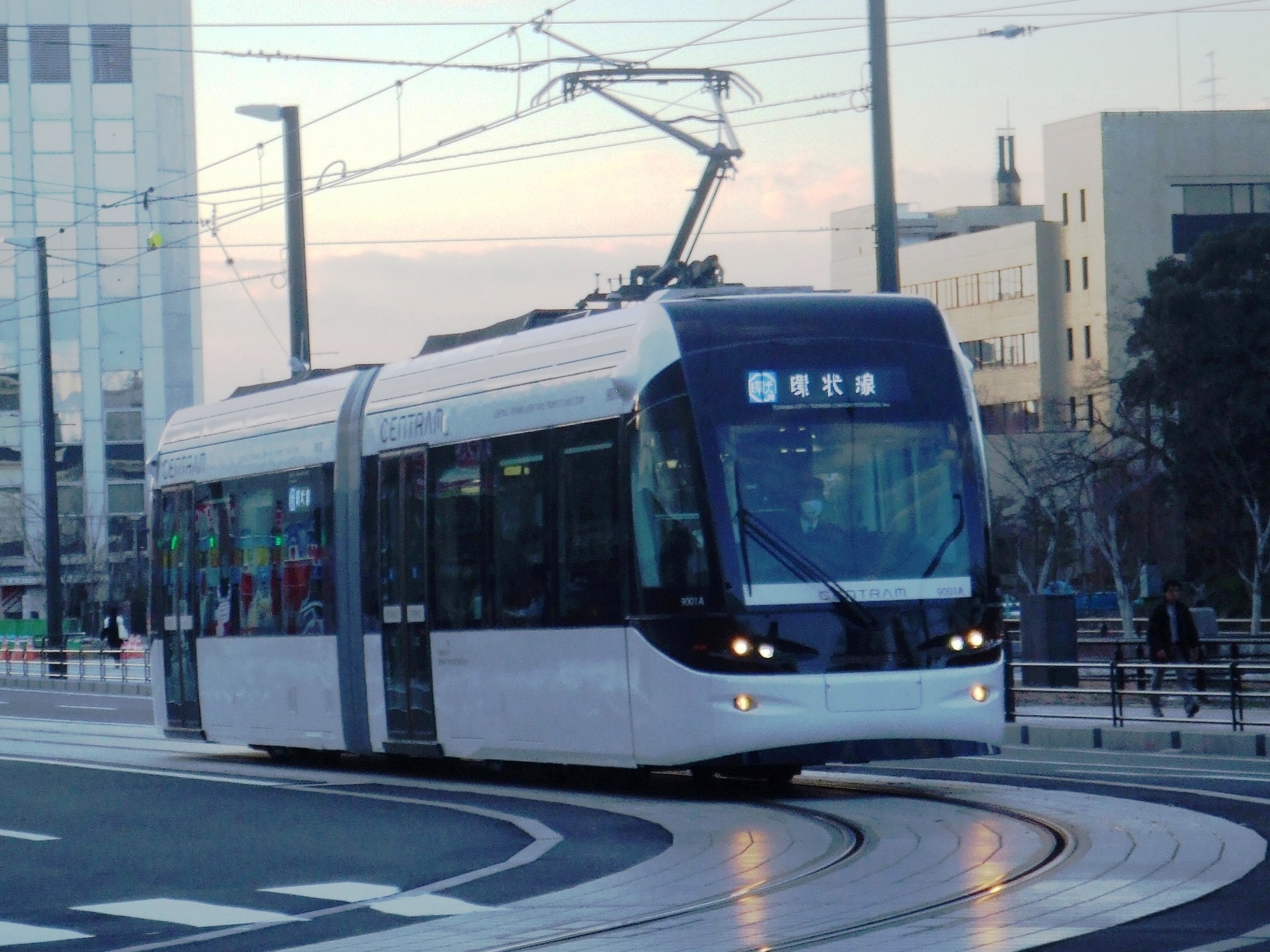 December 24, 2009
December 24, 2009
Toyama Chiho Tetsudō (富山地方鉄道) opened the 0.9 km Toyama Toshin tram Line (Marunouchi = Nishicho) and started an anti-clockwise circular operation (Toyama-ekimae = Marunouchi = Toyama-ekimae). The tracks of the newly built section and three units of LRV (two-car conjunctive type) running the circle line are owned by Toyama Municipal Government. The new line was constructed along the line closed in 1973. The opening ceremony was conducted on the afternoon of December 23, followed by a test-ride event. The regular passenger service started on December 24. (Photo right: LRV of Toyama Toshin Line)
November 1, 2009
Hokuriku Tetsudō (北陸鉄道) closed the 2.1 km Tsurugi = Kaga-Ichinomiya section of Ishikawa Line after 82 years' operation since December 28, 1927. In 1950s Hokuriku Tetsudō had a network of nearly 150km with 12 railway lines spread over Ishikawa Prefecture and Kanazawa City tram service. Motorization had made the 10 railway lines and the tram closed by early 1970s and the two railway lines continued the operation.
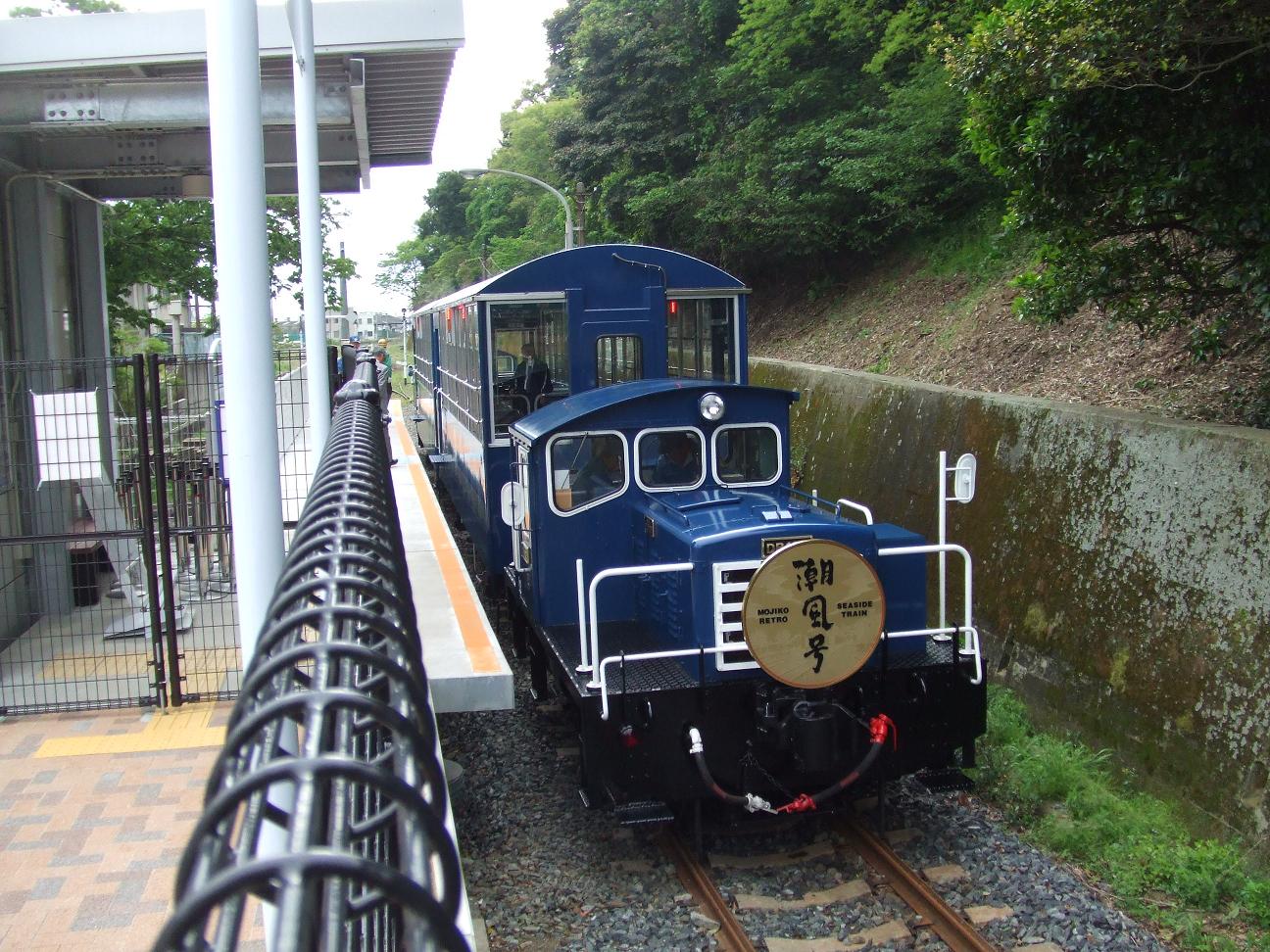 April 26, 2009
April 26, 2009
Heisei Chikuhō Tetsudō (平成筑豊鉄道) opened Yamagin Retro Line (やまぎんレトロライン) in Moji harbor district. The former JR Kagoshima Line's freight branch and KitaKyūshū City's sidings were reborn as a 2.1 km sightseeing line. The train is operated between Kyūshū-Tetsudō-kinenkan and Kanmon-kaikyo-Mekari in weekends and holiday seasons. The line is Class 2 operation of Heisei Chikuho Tetsudōand the Class 3 operator is Kita Kyūshū City. (Photo left: Train at Kanmon-kaikyo-Mekari station)
April 1, 2009
JR West (JR西日本) officially closed the 11.3 km Kansai Branch Line between Yao and Sugimotocho. The section called Hanwa-Kamotsu-sen (阪和貨物線) or Hanwa Freight Line was once passed by a regular passenger train. Kiha 82 DMU Limited Express "Asuka" was operated between Nagoya and Higashi-Wakayama (now Wakayama) from March 1, 1965 till September 30, 1967. A plan to revive the section for passenger services faded away, while Katamachi Branch Line or Jōtō Freight Line was revived as Ōsaka-Higashi Line. Until March 2003 Hanwa Freight Line was on the route from Zushi to Wakayama to transport EMUs built by Tōkyū Car Corporation for Nankai Electric Railway.
Kosaka Seiren (小坂精錬) closed the 22.3 km Kosaka Freight Line whose operation had been halted since April 1, 2008. The line had operated passenger services until October 1, 1994.
Wakasa Tetsudō (若桜鉄道) became a Class 2 Operator by transferring its railway infrastructure to Wakasa and Yazu Town Governments, Class 3 Operators.
Kyōto Kōsoku Tetsudō (京都高速鉄道), a Class 3 operator that had owned Kyoto Municipal Subway Tōzai Line's Goryo = Sanjo-Keihan section, was dissolved, and the ownership of the tracks was transferred to Kyoyo Municipal Transportation Bureau (京都市交通局). Kyoyo Municipal Transportation Bureau now operates the entire subway lines as a Class 1 operator. (Added on December 23, 2009)
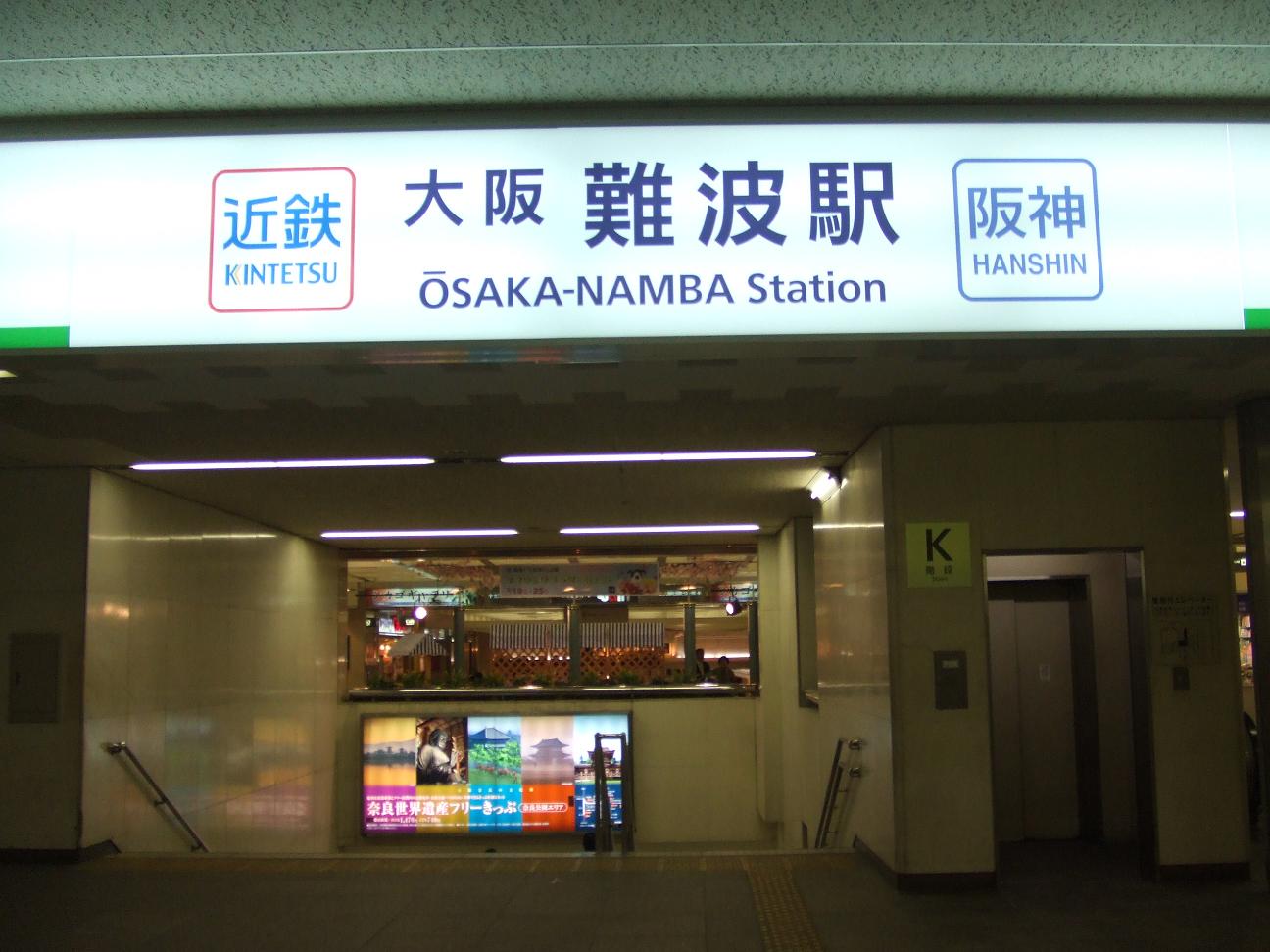 March 20, 2009
March 20, 2009
Hanshin Denki Tetsudō (阪神電気鉄道) opened Hanshin-Nanba Line (阪神なんば線). The line consists of the former Nishi-Ōsaka Line (Amagasaki = Nishi-Kujo) and the newly built 3.8 km section from Nishi-Kujo to Ōsaka-Namba (former Kintetsu-Nanba) of Kintetsu Nanba Line. Hanshin and Kintetsu started through services between Sannomiya and Kintetsu-Nara. The new section is Hanshin's Class 2 operation and the Class 3 operator is Nishi-Ōsaka Kōsoku Tetsudō (西大阪高速鉄道). (Photo right: Ōsaka-Namba station)
December 28, 2008
Nagoya Tetsudō (名古屋鉄道) closed Monkey Park Monorail Line between Inuyama-Yuen and Dobutsuen. The 1.2 km line, opened on march 21, 1962, was the first astraddle monorail in Japan and the second monorail line next to the Ueno Zoo monorail opened in 1957 by Tokyo Metropolitan Government Transportation Bureau.
Takachiho line of Takachiho Tetsudō (高千穂鉄道) was officially closed. The line was halted after it was heavily damaged by a typhoon in September 2005. The 29.1 km Nobeoka = Makimine section was officially closed on September 6, 2007. The closure of the remaining Makimine = Takachiho section was suspended because of a plan to revive the section as a sightseeing railway line. The revival plan was formulated to operate the line as amusement facilities not governed by the Railway Operation Law, which made the 20.9 km section officially closed.
October 19, 2008
Keihan Denki Tetsudō (京阪電気鉄道) opened Nakanoshima Line (中之島線). The new line, a 3.0 km extention branched at Tenmabashi station of Keihan Line, runs underground to Nakanoshima station. The line is a Class 2 operation of Keihan and the Class 3 operator is Nakanoshima Kōsoku Tetsudō (中之島高速鉄道)
June 14, 2008
Tōkyō Chikatetsu (東京地下鉄) opened the Fukutoshin Line (副都心線). The line consists of 3.0 km Kotake-Mukaibara = Ikebukuro section which was operated as Yurakucho New Line (有楽町新線) on separate tracks pararell to Yurakucho Line and newly built 8.9 km Ikebukuro = Shibuya section. The trains of Tobu Tojo Line and Seibu Ikebukuro Line have started through services to Fukutoshin Line in addition to Yurakucho Line. Through services with Tokyū Tōyoko Line will start in 2012 when Tōyoko Line Shibuya terminus will be moved underground and connected with Fukutoshin Line.
April 1, 2008
Ibaragi Kotsu (茨城交通) transferred the Minato Line to Hitachi-Naka Kaihin Tetsudō, a third sector company funded by Hitachi-Naka Municipal Government.
Miki Tetsudō (三木鉄道) closed the railway line between Yakujin and Miki. Banshu Tetsudō (播州鉄道) first opened the section between Yakujin and Bessho in 1916 and completed the entire line in 1917. The line was merged with Bantan Tetsudō (播但鉄道) in 1923 and nationalized in 1943. In 1985 Miki Tetsudō, a third sector company, took over the line designated as a special local transportation line in the JNR reformation program.
Shimabara Tetsudō (島原鉄道) closed the 35.3 km Shimabara-Gaiko = Kazusa section which is accounted for 80% of the railway deficit. The closed section, first opened by Kuchinotsu Tetsudō (口之津鉄道) during 1922 - 1928, was heavily damaged by the eruption of Mt. Fugen in 1991, and reopened in 1997 using the elevated tracks between Shimabara-gaiko and Fukae.
March 30, 2008
Tokyo Metropolitan Transportation Bureau (東京都交通局) opened the 9.7 km Nippori-Toneri Line (日暮里・舎人線) from Nippori to Minumadai-shinsuikoen. The guided rail, called Nippori-Toneri Liner, was constructed by Tōkyō-to Chikatetsu Kensetsu (東京都地下鉄建設) and transferred to Tokyo Metropolitan Transportation Bureau.
Yokohama Municipal Transportation Bureau (横浜市交通局) opened the No. 4 Subway Line, called Green Line, between Hiyoshi and Nakayama (13.0km). The existing subway line is now called Blue Line.
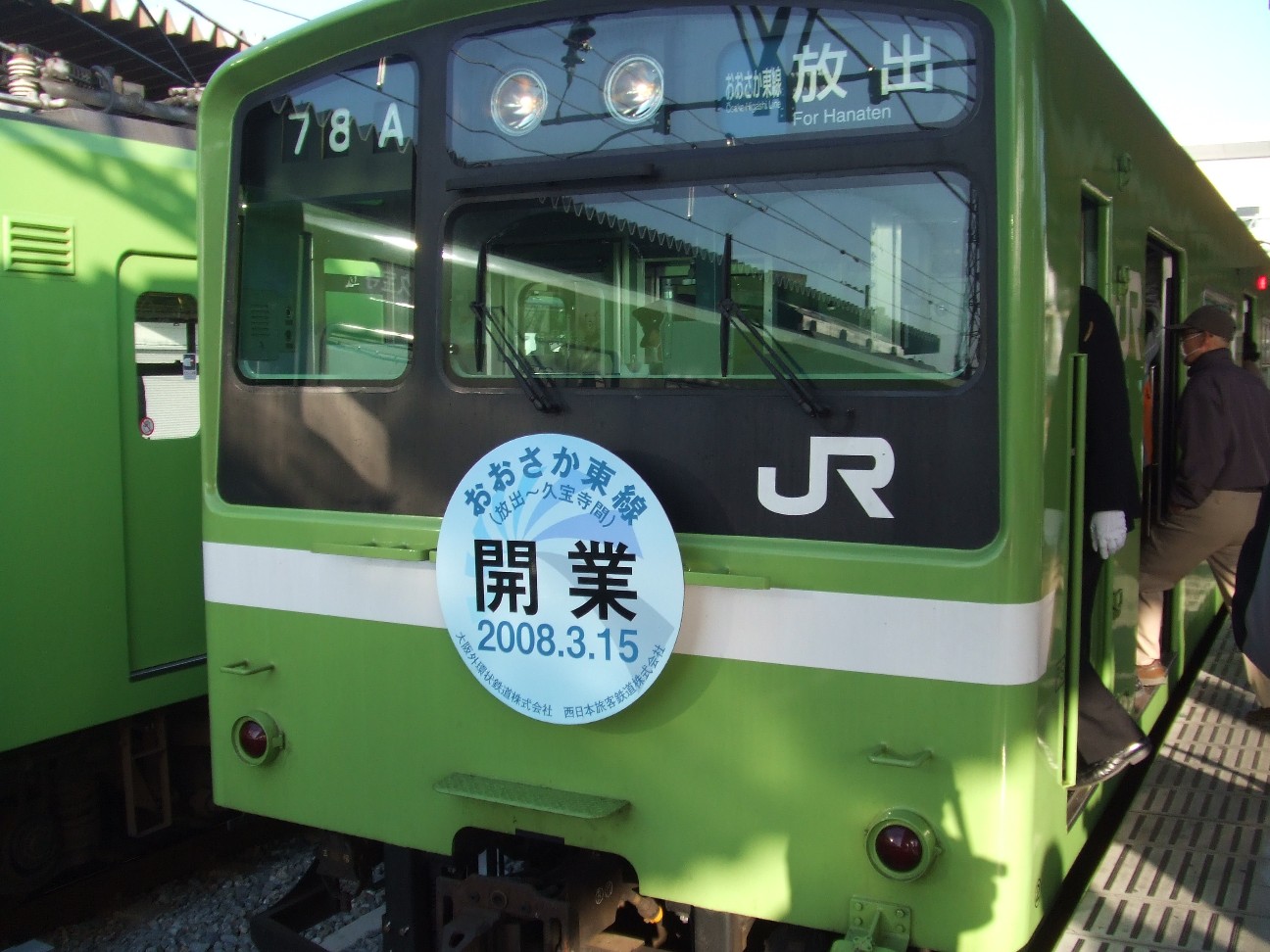 March 15, 2008
March 15, 2008
JR West (JR西日本) started passenger services in the 9.2 km Ōsaka-higashi Line (おおさか東線) from Hanaten to Kyūhoji. The line, the former freight branch of Katamachi Line, was reconstructed by Ōsaka Soto-kanjo Tetsudō (大阪外環状鉄道), a Class 3 Operator, for JR West's Class 2 operation. The extention of the line from Hanaten to Shin-Ōsaka is now under construction for opening in spring 2012. The extended section between Shin-Ōsaka and Shigino will also use the exsiting freight branches of Tokaido and Katamachi Lines, and in the Shigino - Hanaten section will have another double track in addition to Katamachi Line track. (Photo left: 200 series EMU train at Kyūhoji station)
January 16, 2008
Kyoto Municipal Subway (京都市営地下鉄) opened a 2.4 km extension of Tōzai Line (東西線) from Nijo to Uzumasa-Tenjingawa.
October 1, 2007
Kintetsu transferred the operation of its Yōrō Line and Iga Line to Yōrō Tetsudō (養老鉄道) and Iga Tetsudō (伊賀鉄道), respectively. Both companies have been incorporated as Kintetsu' wholly-owned subsidiaries and operate the railway lines as a Class 2 Operator, while Kintetsu remains the owner of the railway tracks and rolling stocks as Class 3 Operator.
April 1, 2007
Kurihara Den'en Tetsudō (くりはら田園鉄道) terminated the railway operation. The line ended the 85 year history since Kurihara Kido (栗原軌道) opened a 762mm gauge light railway between Ishikoshi and Sawabe in 1921. The line was extended to Hosokura Kozan in 1942, electrified in 1952 and rebuilt to a 1067mm gauge in 1955. Since 1993 the railway line has been operated by Kurihara Den'en Tetsudō, a third sector company funded by local governments.
Kashima Tetsudō (鹿島鉄道) also closed the railway line. Kashima Sangu Tetsudō (鹿島参宮鉄道) first opened the section between Ishioka and Hitachi-Ogawa in 1924 and completed the entire line in 1929. In 1965 the railway became Kanto Tetsudō (関東鉄道) Hokota Line by the merger of Kashima Sangu Tetsudō and Jōsō Tsukuba Tetsudō, but was separated as Kashima Tetsudō in 1979.
Nishi-Nihon Tetsudō (西日本鉄道) closed the Nishitetsu-Shingu = Tsuyazaki section of Miyajidake Line (宮地岳線). The remaining section was renamed Kaiduka Line (貝塚線).
March 19, 2007
Ōsaka Kōsoku Tetsudō (大阪高速鉄道) opened a 4.2km extension of the Kokusai Bunka Kōen Toshi Line (国際文化公園都市線) from Handai Byoin-mae to Saito-nishi.
March 18, 2007
Sendai Airport Transit (仙台空港鉄道) opened the 7.1km Sendai kūkō Line (仙台空港線) between Natori and Sendai kūkō (Airport) and started a through operation with JR East from/to Sendai station. Sendai Airport has become the 11th airport in Japan which has an access by rail transit.
December 24, 2006
Osaka Municipal Transport Bureau (大阪市交通局) opened the 11.9km Hachigo (Imazato-suji) Line (8号(今里筋)線) between Itakano and Imazato. Running from north to south in the eastern part of Osaka City, the line has expanded the grid network of the Osaka Municipal subway.
December 1, 2006
Kamioka Tetsudō (神岡鉄道) terminated the operation of Kamioka Line. The line ended the 40 year history since it was opened in 1966 as JNR's Kamioka Line. This is the sixth closure of the former JNR lines transferred to third sector or private companies, following Konan
Tetsudō Kuroishi Line (April 1, 1998), Shimokita Kotsu (April 1, 2001), Noto Tetsudō Nanao Line (Anamizu = Wajima section, April 1, 2001), Noto Tetsudō Noto Line (April 1, 2005) and Hokkaido Chihoku Kogen Tetsudō (April 30, 2006). The local government has a plan to reopen the Kamioka Line as a sightseeing railway.
October 1, 2006
Tokadai Shin-kotsu (桃花台新交通) terminated the 15 years operation of its guideway transit line between Komaki and Tokadai-higashi, Aichi Prefecture. This is the first closure of the "new transportation systems"with rubber-tyred vehcles on a guideway track which became prevalent since early 1980's as a medium-sized rail transit in Japan.
 April 29, 2006
April 29, 2006
Toyama Light Rail (富山ライトレール) started the operation of its new LRT system nicknamed "Portram". The line consists of the tracks of the former Toyamako Line of JR West between Okuda-chūgakkō-mae and Iwasehama stations and a new tram line from Okuda-chūgakkō-mae station to Toyama-eki-kita stop. This is Japan's first attempt to revitalize a conventional "heavy" railway into an LRT system. (Photo left: Toyama-eki-kita stop)
April 21, 2006
Hokkaidō Chihoku Kōgen Tetsudō (北海道ちほく高原鉄道) closed the operation of its Furusato-ginga Line (ふるさと銀河線). The line ended the 95 year history since the Ikeda = Rikubetsu section was first built in 1910 as JNR's Abashiri Line.
April 1, 2006
Nankai transferred its 14.3km Kishigawa Line to Wakayama Dentetsu (和歌山電鐵), a wholly-owned subsidiary of Okayama Denki Kido (岡山電気軌道).
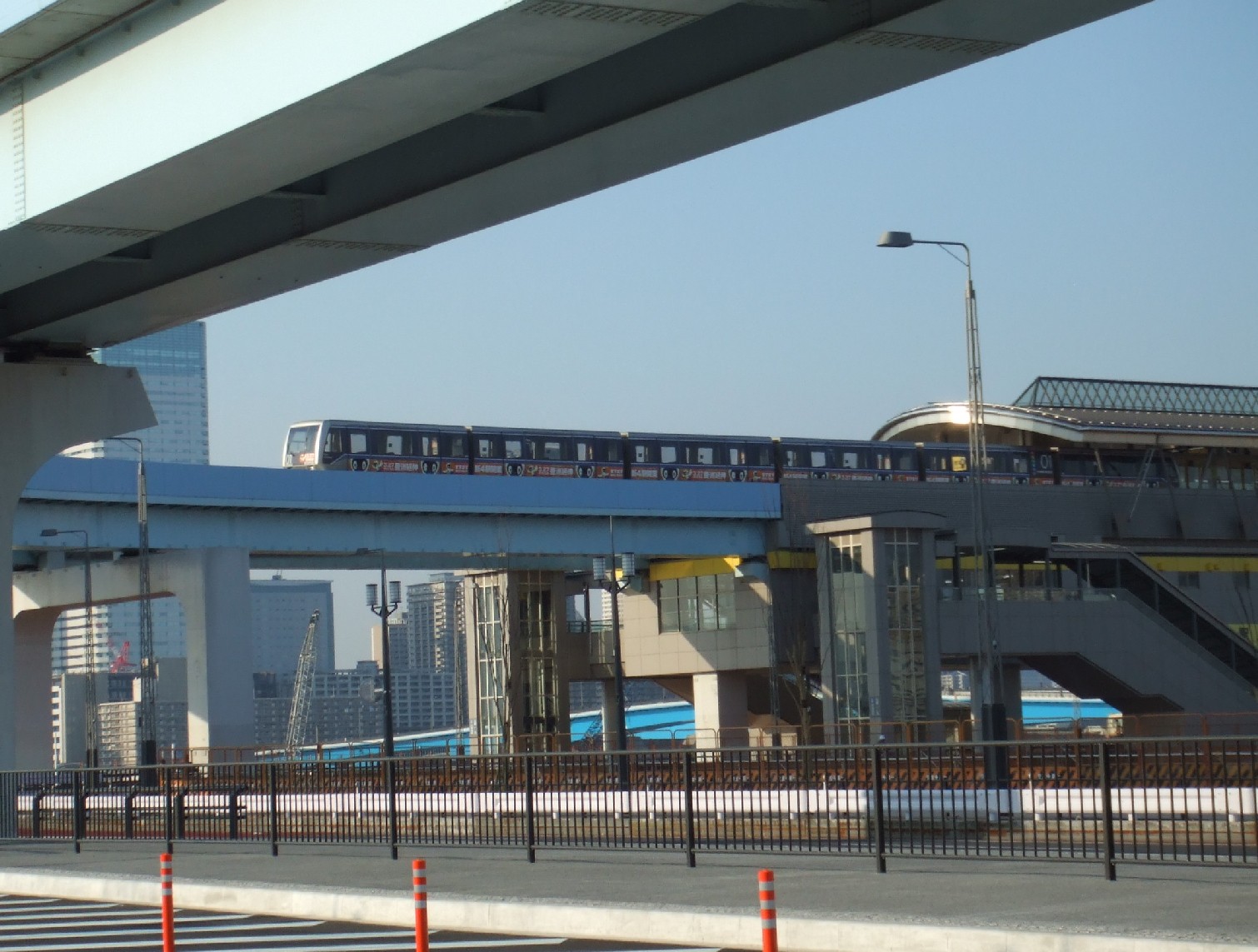 March 27, 2006
March 27, 2006
Yurikamome (ゆりかもめ) extended the Tōkyō Rinkai Shin-kōtsu Rinkai (東京臨海新交通臨海) Line from Ariake to Toyosu, where passengers can transfer to Tokyo Metro's Yurakucho Line. (Photo right: Shijō-mae station)
Kintetsu (近鉄)
started Class 2 Operation of the Ikoma = Gakken-Nara-Tomigaoka section of Keihan'na Line (けいはんな線). The former Higashi Ōsaka Line became a part of Keihan'na Line and the through operation with Osaka Municipal Subway's Yongo Line was extended between Cosmo-Square and Gakken-Nara-Tomigaoka.
March 1, 2006
JR West (JR西日本) closed the operation of its Toyama-kō Line (富山港線) with the last train leaving Iwasehama at 21:56 on March 28, 2006. The line will be reopened as an LRT by Toyama Light Rail (富山ライトレール) on April 29.
February 2, 2006
Kōbe Shinkōtsū (神戸新交通)
opened an extention of Port-Island Line (ポートアイランド線) between Shimin-hiroba and Kōbe-kūkō prior to the opening of Kobe Airport on February 16.
September 1, 2005
Izu Hakone Tetsudō (伊豆箱根鉄道)
closed down its Komagatake Kōsaku (cable) Line (駒ケ岳鋼索線).
August 31, 2005
Yashima Tozan Tetsudō (屋島登山鉄道) officially abolished its cable line whose operation had been suspended since October 16, 2004.
August 24, 2005
Metropolitan Intercity Railway Company or Shutoken Sintoshi Tetsudō (首都圏新都市鉄道) opened Tsukuba Express Line that links Akihabara and Tsukuba. The trains run at a top speed of 130 km/h and rapid trains travel the 58.3 km line between the terminals in 45 minutes. Like Joban Line of JR East, Tsukuba Express Line operates under
dual mopde of electricity; 1,500V DC for Akihabara = Moriya section and 20,000 V, 50Hz AC for Moriya = Tsukuba section so that the strong DC electricity may not interrupt geomagnetic measurements at the Japan Meteorological Agency's laboratory located near the line. DC-only cars are used for local trains turning back at Moriya and DC/AC bimodal cars are used for the rapid trains to Tsukuba.
July 1, 2005
Osaka Municipal Transport Bureau (大阪市交通局) and Ōsaka-ko Transport System (大阪港トランスポートシステム)
or OTS, a third sector company primarily funded by Osaka Municipal Government, consolidated their subway and guided rail operations where the trains ran across the both operators' lines. Osaka Municipal Transport Bureau operates
the former OTS Techno-port Line (テクノポート線) and New-tram-technoport Line (ニュートラムテクノポート線) as its subway Yongō Line (4号線) and guided rail Nankō-port-town Line (南港ポートタウン線) respectively. OTS remains the Class 3 operator (or the owner of tracks) of the railway sections; Yongō Line's Cosmo-Square = Ōsaka-kō section and Nankō-port-town Line's Cosmo-Square = Naka-futō section, and Osaka Municipal Transport Bureau opeates as Class 2 operator. The OTS tracks operated under the Tramway Law were transferred to Osaka Municipal Transport Bureau. By this intrgration the fares for traveling across the former OTS Line and Osaka Municipal subway and guided rail lines are substantially reduced because the duplicated "first ride fares" are no more necessary.
April 1, 2005
Nagoya Railway (名古屋鉄道) or Meitetsu (名鉄) closed all 600 volt lines in the vicinity of Gifu city, including Ibi Line (揖斐線), Gifu Shinai Line (岐阜市内線), Minomachi Line (美濃町線) and Tagami Line (田神線). By the closure of the four lines with the total Eigyo-kilo of 33.6km, Meitetsu slode down to the third place in terms of the length of railway network among non-JR operators, next to Kintetsu and Tobu.
Hitachi Dentetsu (日立電鉄) closed the railway line between Jōhoku-Ōta and Ayukawa. It ended the life of 77 years since its opening in December 1928.
Noto Tetsudō (のと鉄道) closed Noto Line (能登線) between Anamizu and Takoshima, opened by JNR during 1959 - 1964, and transferred to JR West in 1987 and then to Noto Tetsudō in 1988.
March 25, 2005
Japan Association for the 2005 World Exposition started a passenger service of IMTS (Intelligent Multimode Transit System) at the site of EXPO 2005 in Aichi prefecture. IMTS allows dual mode operation; an unmanned, platoon operation on dedicated roads and a manual, independent operation on ordinary
roads). On the dedicated roads IMTS vehicles are navigated and controlled by magnetic markers imbedded in the roads. Thus, the operation of 1.6 km dedicated roads between North Gate and Expo Dome is regarded as a railway
operation of Aichikyūhaku line (愛・地球博線) and conducted by receiving a permit of limited period Class 1 Operation under the Railway Operations Law.
March 6, 2005
Aichi Kōsoku Kōtsū (愛知高速交通) or Aich Rapid Transport opened a new 8.9km Tōbu Kyūryō line
(東部丘陵線) between Fujigaoka and Banpaku Yagusa, as an access line to the site of EXPO 2005, Aichikyūhaku (愛・地球博), which will take place from March 25 through September 25. Nicknamed Linimo, this is the first Maglev line in operation.
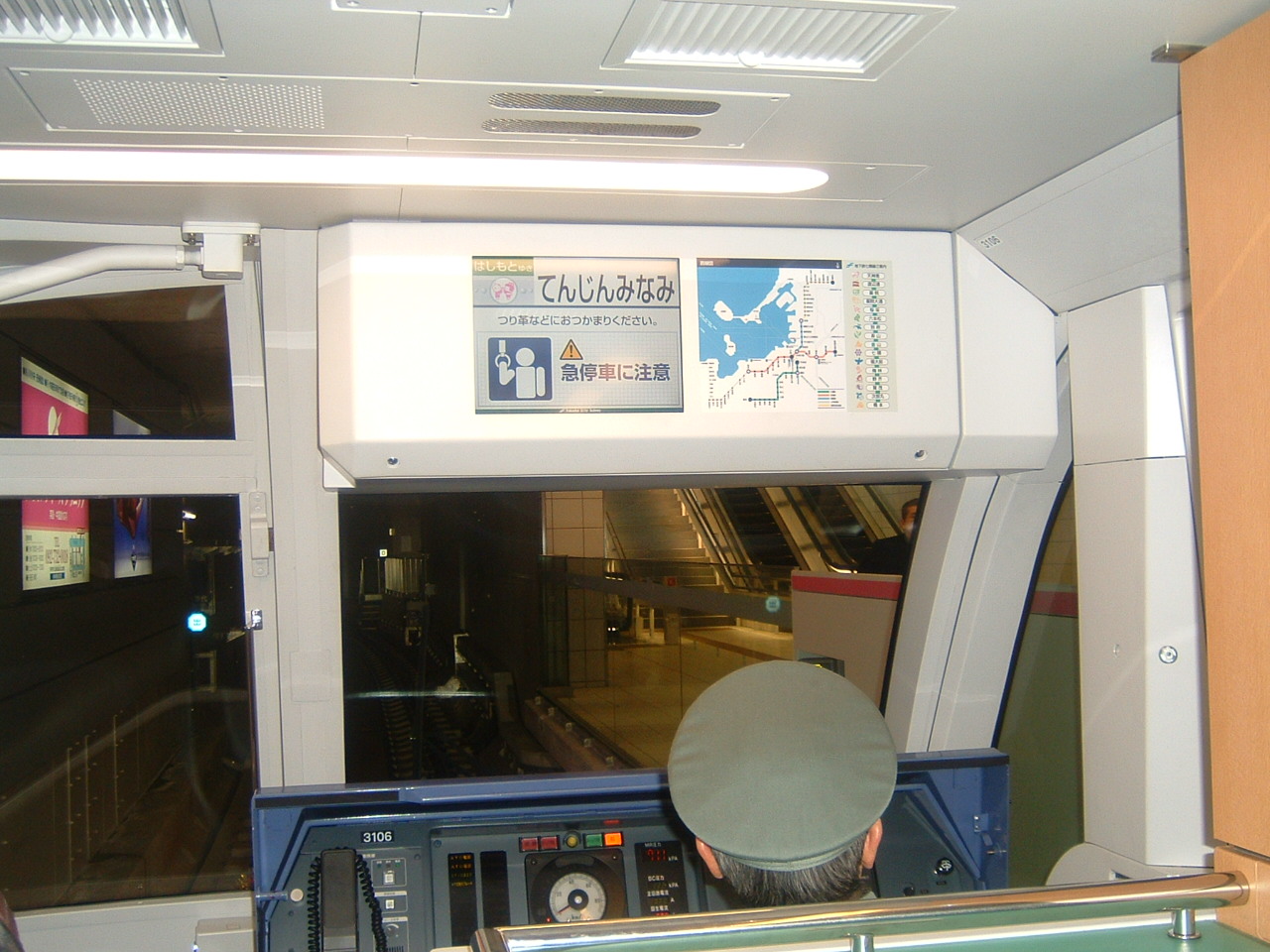
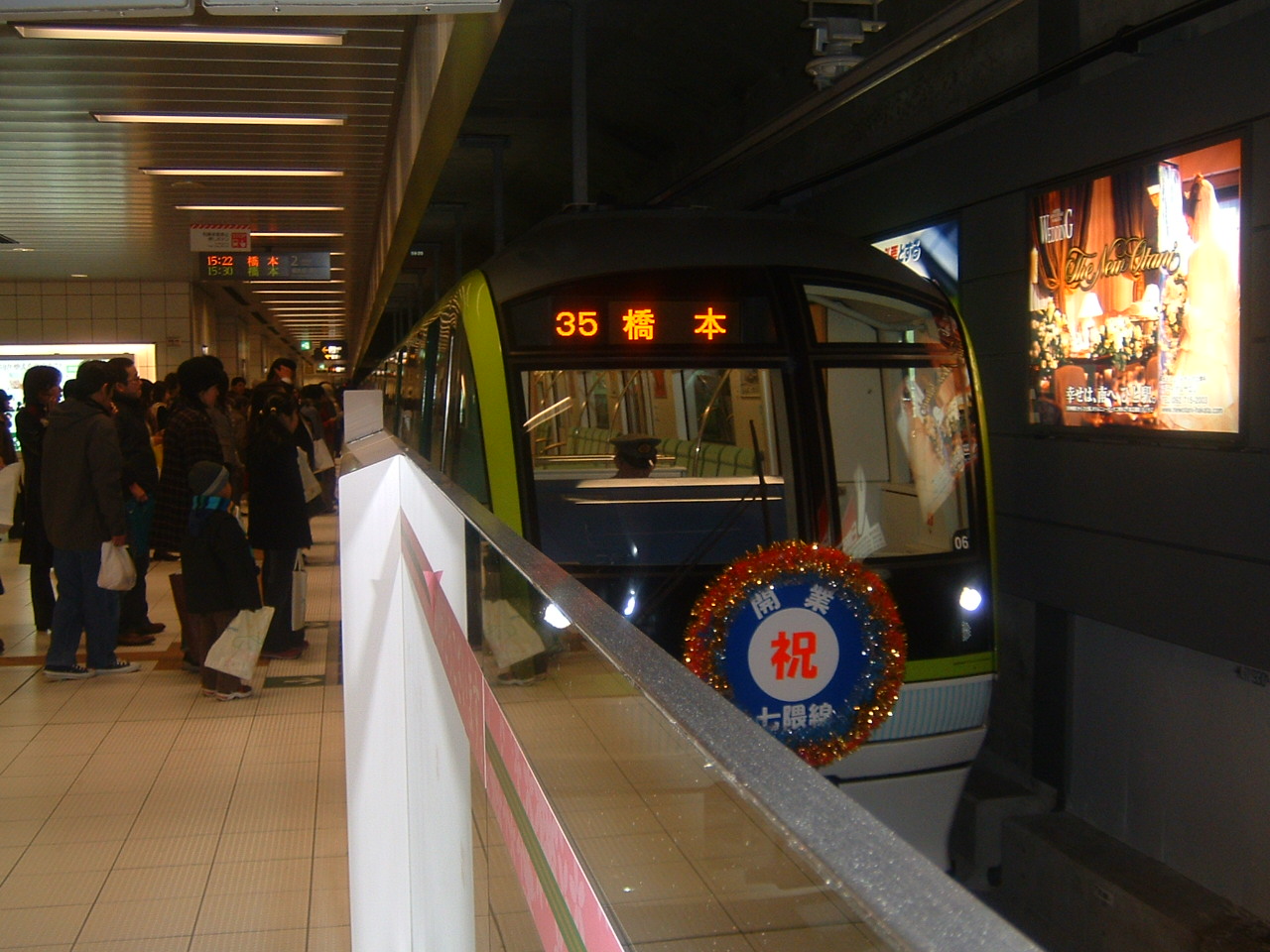 February 3, 2005
February 3, 2005
Fukuoka Municipal Subway (福岡市営地下鉄) opened a 12.0 km No.3 (Nanakuma) Line (3号(七隈)線) between Tenjin-minami and Hashimoto. The cars are smaller than the two existing Fukuoka subway lines and powered by linear induction motors like Oedo Line of the Tokyo Metropolitan Subway. (Photo left: Motorman's seat of Nanakuma-Line car, right: Tenjin-Minami Station)
January 29, 2005
Nagoya Railway (名古屋鉄道) or Meitetsu (名鉄) officially opened the Kūkō Line (空港線) between Tokoname and Chūbu-Kokusai-kūkō (4.2 km) and started regular passenger services before the opening of the new Chubu International Airport on February 27. The limited services for persons commuting to the airport were already started on October 16, 2004. Concurrently Meitetsu changed the name of four stations; Shin-Nagoya to Meitetsu-Nagoya, Shin-Ichninomiya to Meitetsu-Ichinomiya, Shin-Gifu to Meitetsu-Gifu and Nagoya-kyūjō-mae to San'no.
December 1, 2004
With the opening of the second terminal of the Haneda Airport, Tōkyō Monorail (東京モノレール) extended Tōkyō Monorail Haneda Line (東京モノレール羽田線) from Haneda kūkō-daiichi-Building (former Haneda-kūkō) to Haneda kūkō-daini-Building (0.9 km).
November 26, 2004
Kyoto Municipal Subway (京都市営地下鉄) opened the 2.4 km section of Tōzai Line (東西線) between Daigo and Rokujizō.
October 16, 2004
Nagoya Railway (名古屋鉄道) or Meitetsu (名鉄) started limited passenger services of Kūkō Line (空港線) for persons commuting to the new Chubu International Airport. Meitetsu is Class 2 operator, while Chūbu Kokusai-Kūkō Renraku Tetsudō (中部国際空港連絡鉄道)is Class 3 operator that owns the railway tracks. Passenger services for general public will start on January 29, 2005.
Yashima Tozan Tetsudō (屋島登山鉄道) suspended the cable car operation after it entered a bankruptcy procedure on October 12.
October 6, 2004
Nagoya Municipal Subway (名古屋市営地下鉄) opened the 5.6 km section of Yongō (4th) Line (4号線) between Aratamabashi and Nagoya-daigaku (Nagoya University). Upon completion the entire Yongō Line the circle operation has started on the route of Nigō (2nd) Line's Ozone = Kanayama section and Yongō Line's Kanayama = Nagoya-daigaku = Ozone section. The circle line is now called Meijō or Nagoya Castle Line (名城線), while Nigō Line's Kanayama = Nagoya-kō section is called Meikō or Nagoya Port Line (名港線).
Nagoya Rinkai Kōsoku Tetsudō (名古屋臨海高速鉄道) started passenger services on Nishi-Nagoya-kō Line (西名古屋港線) between Nagoya and Kinjō-futō called by a nickname of Aonami Line. The line consists of the electrified and double-tracked 7.0km section of the former JR Central's Tōkaidō Freight Line between Nagoya and Nagoya-kamotsu-terminal and the newly constructed 8.2km section to Kinjō-futō. JR Freight's Class 2 operation remains on the former JR Central's section.
July 1, 2004
With the reorganization into Toshi Saisei Kikō (都市再生機構) or Urban Renaissance Agency, Toshi Kiban Seibi Kōdan (都市基盤整備公団) or Urban Development Corporation withdrew from the railway operation, and transferred the Class 3 operation of Hokusō Kōdan Line (北総・公団線) between Komuro and Inba-Nihon-Idai to Chiba New Town Tesudō (千葉ニュータウン鉄道), a wholly owned subsidiary of Keisei Dentetsu (京成電鉄). Hokusō Kaihatsu Tetsudō (北総開発鉄道) and Hokusō Kōdan Line were renamed to Hokusō Tetsudō (北総鉄道) and Hokuso Line (北総線), respectively.
In the meantime, the extension of the line beyond Inba-Nihon-Idai is being constructed by Narita Kōsoku Access Tetsudō (成田高速鉄道アクセス株式会社) as an access line to Narita Airport. Upon completion expected in 2010, Keisei will operate Skyliner via the new line.
April 1, 2004
Nagoya Railway (名古屋鉄道)
or Meitetsu (名鉄) closed the northern and southern sections of Mikawa Line (三河線) between Nishi-Nakagane and Sanage (8.6km) and between Hekinan and Kira-Yoshida (16.4km).
Teito Kōsokudo Kotsu Eidan (帝都高速度交通営団), a special public corporation that operated Eidan subway lines in Tōkyō, was reorganized into Tōkyō Chikatetsu (東京地下鉄), a limited stock corporation. With the reorganization Eidan Narimasu and Eidan Akatsuka stations were renamed Chikatetsu Narimasu and Chikatetsu Akatsuka respectively.
March 21, 2004
Okamoto Seisakujo (岡本製作所) reopened the Rakutenchi cable Car Line suspended since November 25, 2003 with the completion of the rehabilitation of Rakutenchi amusement park.
March 13, 2004
JR Kyūshū (JR九州) opened the 137.6km Kyūshū Shinkansen (九州新幹線) Line between Shin-Yatsushiro and Kagoshima-chūō (former Nishi-Kagoshima) and started Tsubame super express services. Kagoshima Line's 116.9km section between Shin-Yatsushiro and Sendai was transferred to Hisatsu Orange Tetsudō (肥薩おれんじ鉄道), a third sector company. The section between Sendai and Kagoshima has remained JR 's Kagoshima Line.
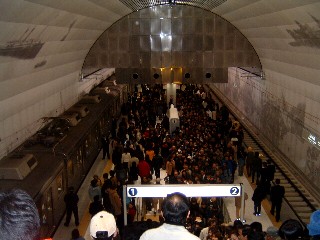
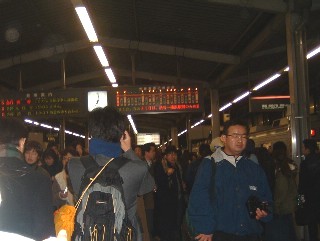 February 1, 2004
February 1, 2004
Yokohama Kōsoku Tetsudō (横浜高速鉄道) opened Minato-Mirai-21 Line (みなとみらい21線) between Yokohama and Motomachi-chūkagai and started a through operation with Tōkyō kyūko Dentetsu (東京急行電鉄) or Tōkyū (東急)Tōyoko Line (東横線) to Shibuya.
In this connection, Tōkyū closed Tōyoko Line's Yokohama = Sakuragichō section with the last train departing Sakuragichō for Hiyoshi at 0:44 on January 31 (midnight of January 30) and moved the tracks beyond Higashi-Hakuraku underground. On January 31 Tōyoko Line trains were operated between Shibuya and Yokohama using the new underground tracks and platforms of Tanmachi and Yokohama satations. (Photo left: Motomachi-chūkagai Station on February 1, right: Sakuragichō Station on January 30)
December 13, 2003
Nagoya Municipal Subway (名古屋市営地下鉄) opened the 4.5 km section of Yongō (4th) Line (4号線) between Sunadabashi and Nagoya-daigaku (Nagoya University). The separated Yongō Line will be connected by further extension between Nagoya-daigaku and Aratamabashi on October 6, 2004 (earlier than March 2005 originally planned). Upon completion the circle operation will start on the route of Nigo (2nd) Line's Ozone = Kanayama section and Yongo Line (Kanayama = Aratamabashi = Ozone).
December 1, 2003
JR West (JR西日本) abandoned the operation of the 46.2 km section of Kabe Line (可部線) between Kabe and Sandankyō. After having proposed the abandonment to related local governments in September 1998, JR West as a trial increased the number of trains during the period between November 1, 2000 and February 20, 2001. Since this trial resulted in no increase of passengers, JR West filed the abandonment on November 29, 2002. Kabe Line was originally intended as a line to connect Hiroshima with Hamada passing chūgoku mountains, and was extended several times until Sandankyō in 1969. No more extension beyond Sandankyō was made since then, and the line has become totally a suburban commuting line in Hiroshima city.
JR Freight (JR貨物) abondoned the 3.4 km Tōkaidō (freight branch) Line (東海道線) between Higashi-Nada Signal Point and Kōbe-kō.
Nagoya Tetsudō (名古屋鉄道) or Meitetsu (名鉄) suspended the operation of the 0.3 km section of Gifu-shinai (tram) Line (岐阜市内線) between Gifu-ekimae and Shin-Gifu-ekimae due to the reconstruction work in the JR Gifu station area. The section will be reopened on April 1, 2005.
November 25, 2003
On November 1, 2003 the loss making Rakutenchi (ラクテンチ) Amusement Park was transferred to Okamoto Seisakujo (岡本製作所) a amusement machine manufacturer based in Osaka, together with the cable car line. Since November 25, 2003 the park has undergone a four months' rehabilitation and operation of the cable car line is suspended.
October 19, 2003
Echizen Railway (えちぜん鉄道) reopened the operation of Katsuyama-Eiheiji Line
(勝山永平寺線) between Eiheiji-guchi and Katsuyama (16.9 km). The entire Echizen Tetsudō Lines are now in operation.
October 4, 2003
Nagoya Railway (名古屋鉄道) or Meitetsu (名鉄) reopened the suspended operation of Tokoname Line (常滑線) between Enokido and Tokoname (1.8km) due to the new Chubu International Airport construction since January 26, 2002. The construction work was completed three months prior to the original schedule.
September 18, 2003
Dream Kaihatsu (ドリーム開発)'s Dreamland Line was officially abolished after almost 36 years' suspension since September 24, 1967. The 5.3 km astraddle monorail line was first opened by Dream Kotsu on May 2, 1966 and was in operation for about 16 months as an access line to Yokohama Dream Land, a popular amusement park then. It was discontinued due to a safety problem that the strength of piers was not enough to support a track with excessive weight of vehicles. Later it was planned to reopen the line by changing the vehicle to a Maglev type train (thus, the line has been categorized as Maglev type in MLTI's Railway Handbook since its 1997 edition). This plan was finally given up and an abolishment notice was filed on September 12, 2002.
August 10, 2003
Okinawa Toshi Monorail (沖縄都市モノレール) started the operation of a 12.9 km astraddle monorail line with fifteen stations between Naha-Kūkō (Naha Airport) and Shuri. With a nickname of "Yui Rail" (ゆいレール), the monorail is the first rail transportation system in Okinawa after the World War II, except a 1.4 km guided rail system operated from July 20,
1974 until January 18, 1975 when the Okinawa Ocean Expo was held.
Echizen Railway (えちぜん鉄道) reopened the operation of Mikuni-Awara Line (三国芦原線) between Nishi-Nagata and Mikuni-kō (13.5 km). The entire Mikuni-Awara Line is now in operation.
July 20, 2003
Echizen Railway (えちぜん鉄道) started the operation of Katsuyama-Eiheiji Line (勝山永平寺線) between Fukui and Eiheiji-guchi (10.9 km) and Mikuni-Awara Line (三国芦原線) between Fukui-guchi and Nishi-Nagata (11.7 km). This is the first reopening of the former Keifuku Dentetsu lines after two years' suspension due to the head-on collision of trains on the single track Echizen Line (now Katsuyama-Eiheiji Line) on June 24, 2001. Echizen Railway was established as a third sector with the funds of local governments and corporations to succeed the two lines of Keifuku Dentetsu while the former Eiheiji Line was abolished as of October 21, 2002.
 January 19, 2025
January 19, 2025 January 19, 2025
January 19, 2025 March 23, 2024
March 23, 2024 March 16, 2024
March 16, 2024 August 26, 2023
August 26, 2023 March 18, 2022
March 18, 2022 JR Kyūshū (JR九州) opened the 69.6km Nishi-Kyūshū Shinkansen (西九州新幹線) Line between Takeo-onsen and Nagasaki and started "Kamome" super express services. A cross-platform transfer is adopted at Takeo-onsen station between the arriving Limited Express "Relay Kamome" and the departing Super Express Kamome, and vice versa. With the opening of NIshi-Kyūshū Shinkansen, JR Kyūshū becomes a Class 2 operator of Nagasaki Line's 60.8km section between Kōhoku (former Hizen-Yamaguchi) and Isahaya, and the tracks and land are owned by a Class 3 Operator, Saga Nagasaki Tetsudō Kanri Center (佐賀・長崎鉄道管理センター) or Saga Nagasaki Railway Management Center, a General Incorporated Association established by Saga and Nagasaki prefectures. JR Kyūshū remains a Class 1 operator of the sections between Tosu and Kōhoku and between Isahaya and Nagasaki. (Photo: Cross-platform transfer at Takeo-onsen station)
JR Kyūshū (JR九州) opened the 69.6km Nishi-Kyūshū Shinkansen (西九州新幹線) Line between Takeo-onsen and Nagasaki and started "Kamome" super express services. A cross-platform transfer is adopted at Takeo-onsen station between the arriving Limited Express "Relay Kamome" and the departing Super Express Kamome, and vice versa. With the opening of NIshi-Kyūshū Shinkansen, JR Kyūshū becomes a Class 2 operator of Nagasaki Line's 60.8km section between Kōhoku (former Hizen-Yamaguchi) and Isahaya, and the tracks and land are owned by a Class 3 Operator, Saga Nagasaki Tetsudō Kanri Center (佐賀・長崎鉄道管理センター) or Saga Nagasaki Railway Management Center, a General Incorporated Association established by Saga and Nagasaki prefectures. JR Kyūshū remains a Class 1 operator of the sections between Tosu and Kōhoku and between Isahaya and Nagasaki. (Photo: Cross-platform transfer at Takeo-onsen station)
 December 25, 2021
December 25, 2021


 March 31, 2019
March 31, 2019 March 23, 2019
March 23, 2019 March 16, 2019
March 16, 2019 March 4, 2017
March 4, 2017 March 27, 2016
March 27, 2016 March 26, 2016
March 26, 2016 December 20, 2015
December 20, 2015 May 30, 2015
May 30, 2015 The operations of Kita-Kinki Tango Tetsudō and Kintetsu Utsube and Hachiōji Lines were transferred to Willer Trains and Yokkaichi Asunarō Tetsudō, respectively, under the government scheme of reformation and activation of the local traffic.
The operations of Kita-Kinki Tango Tetsudō and Kintetsu Utsube and Hachiōji Lines were transferred to Willer Trains and Yokkaichi Asunarō Tetsudō, respectively, under the government scheme of reformation and activation of the local traffic.

 March 12, 2011
March 12, 2011 July 17, 2010
July 17, 2010 December 24, 2009
December 24, 2009 April 26, 2009
April 26, 2009 March 20, 2009
March 20, 2009 March 15, 2008
March 15, 2008 April 29, 2006
April 29, 2006 March 27, 2006
March 27, 2006
 February 3, 2005
February 3, 2005
 February 1, 2004
February 1, 2004